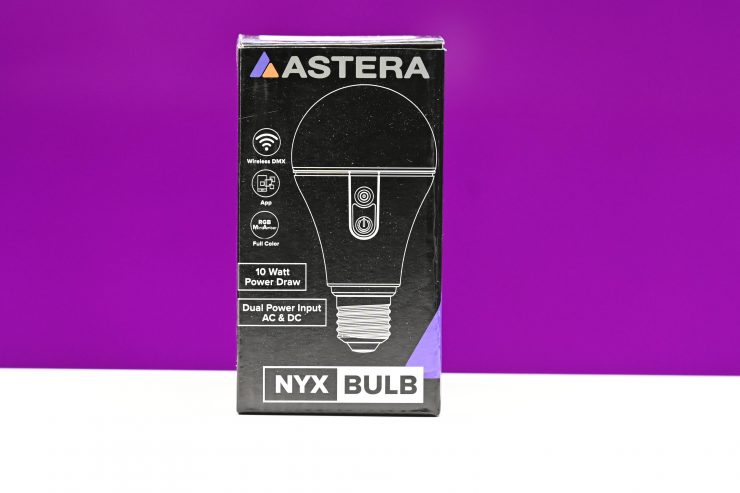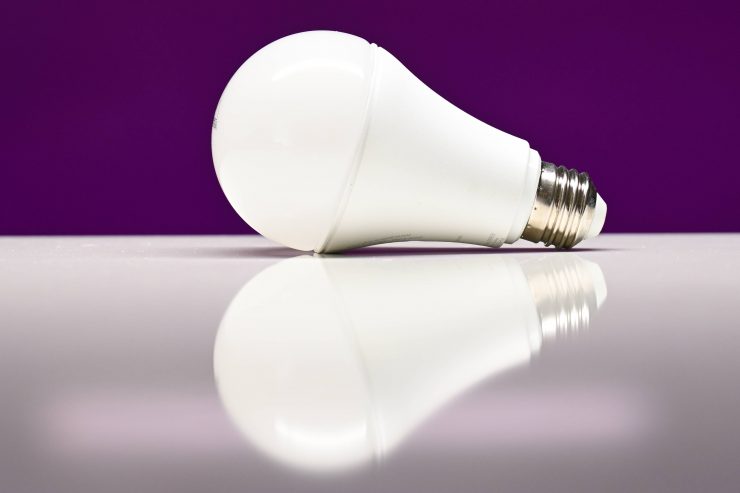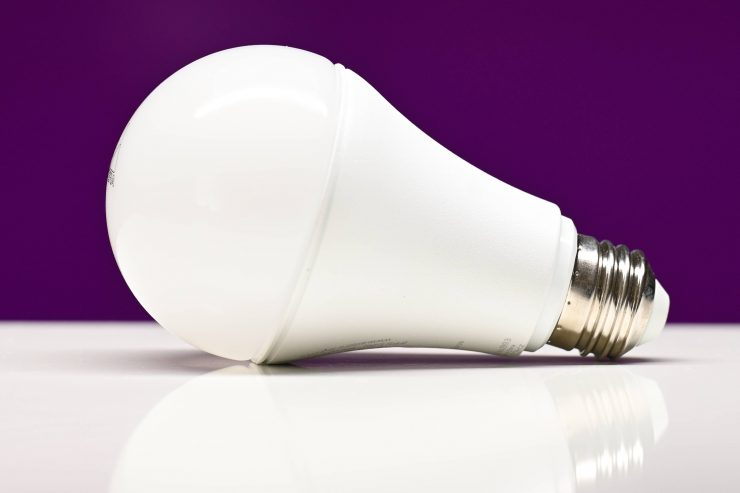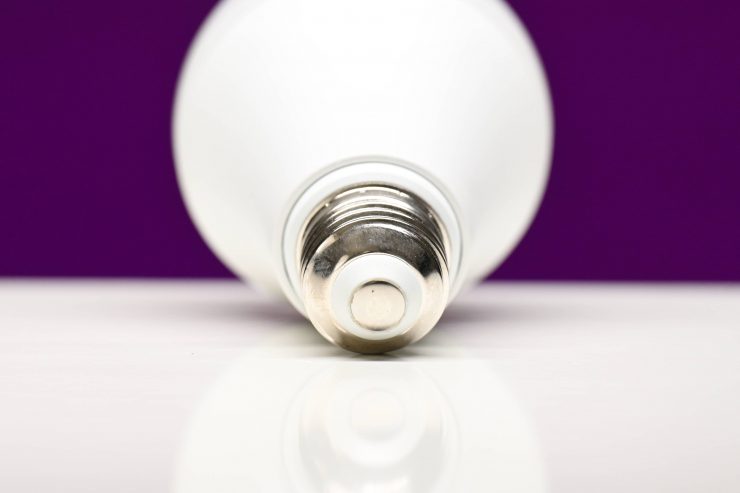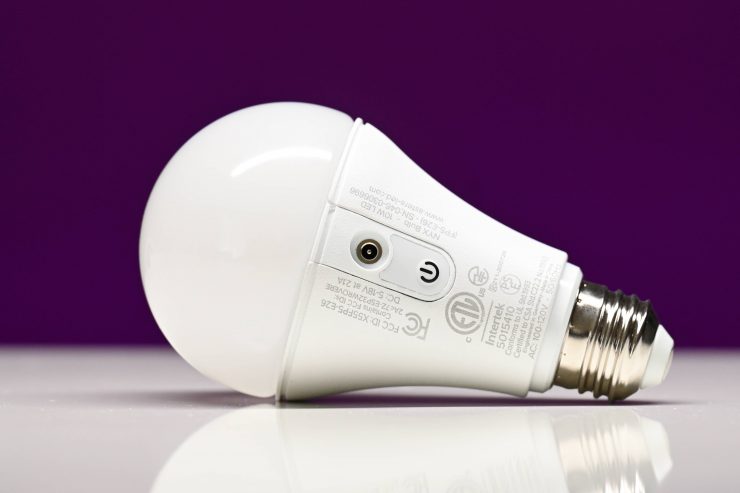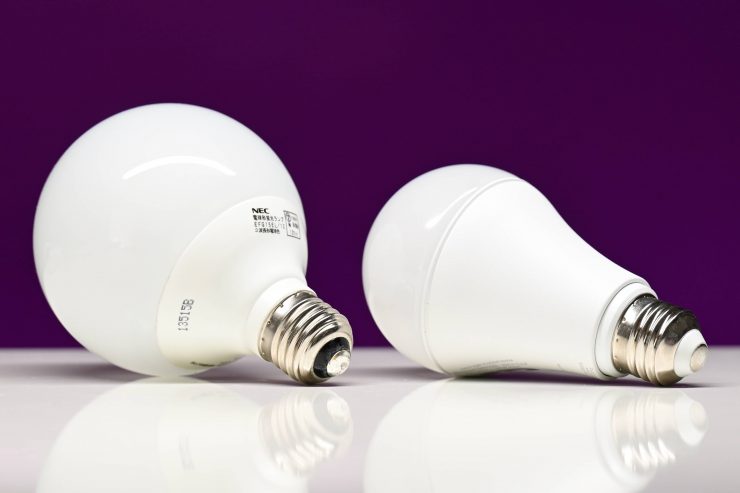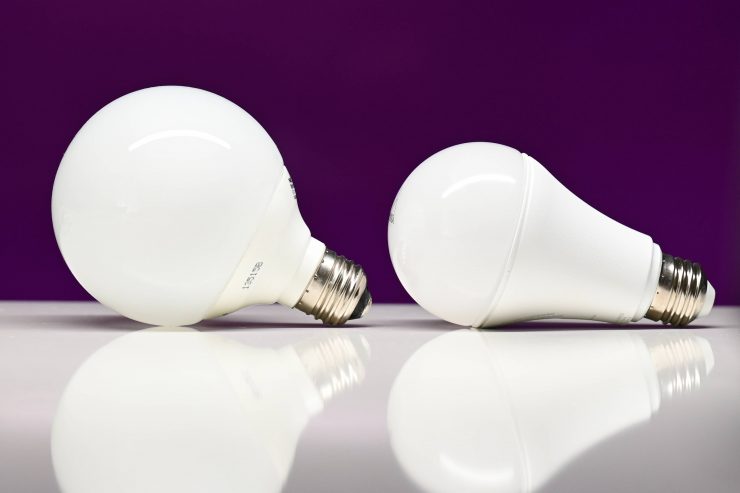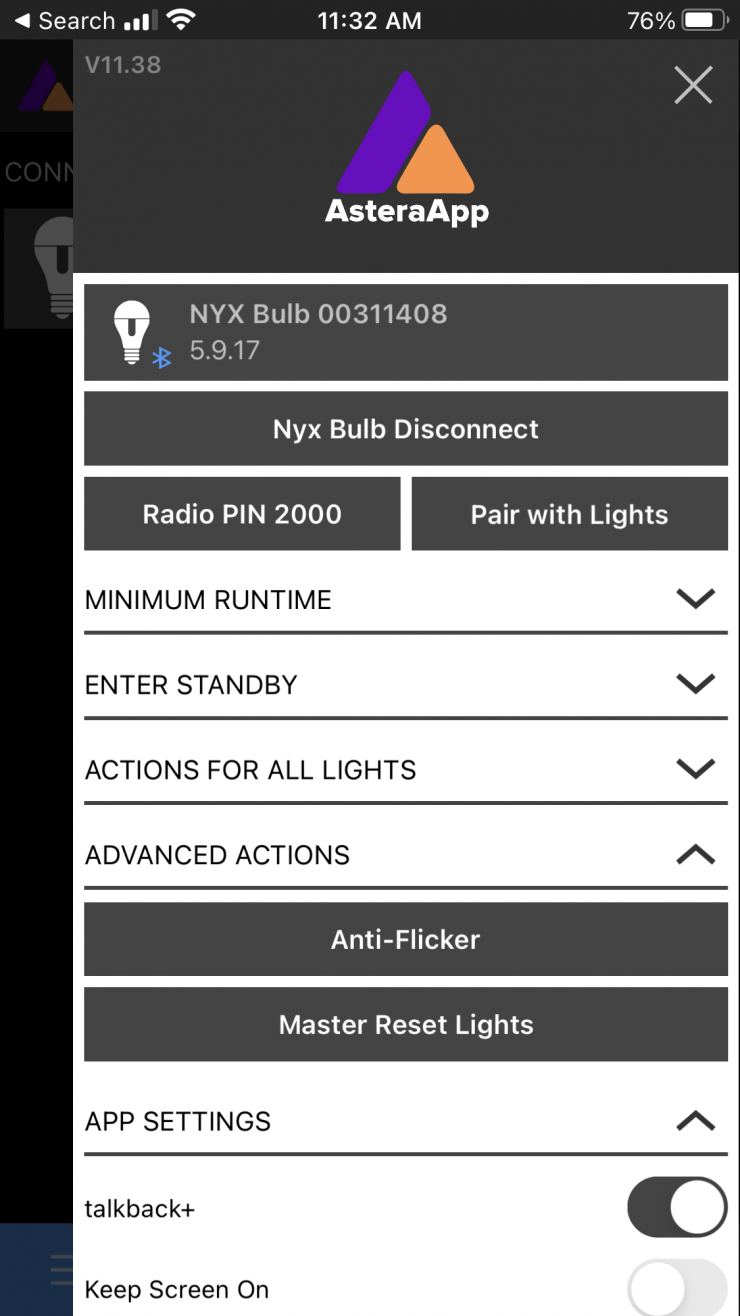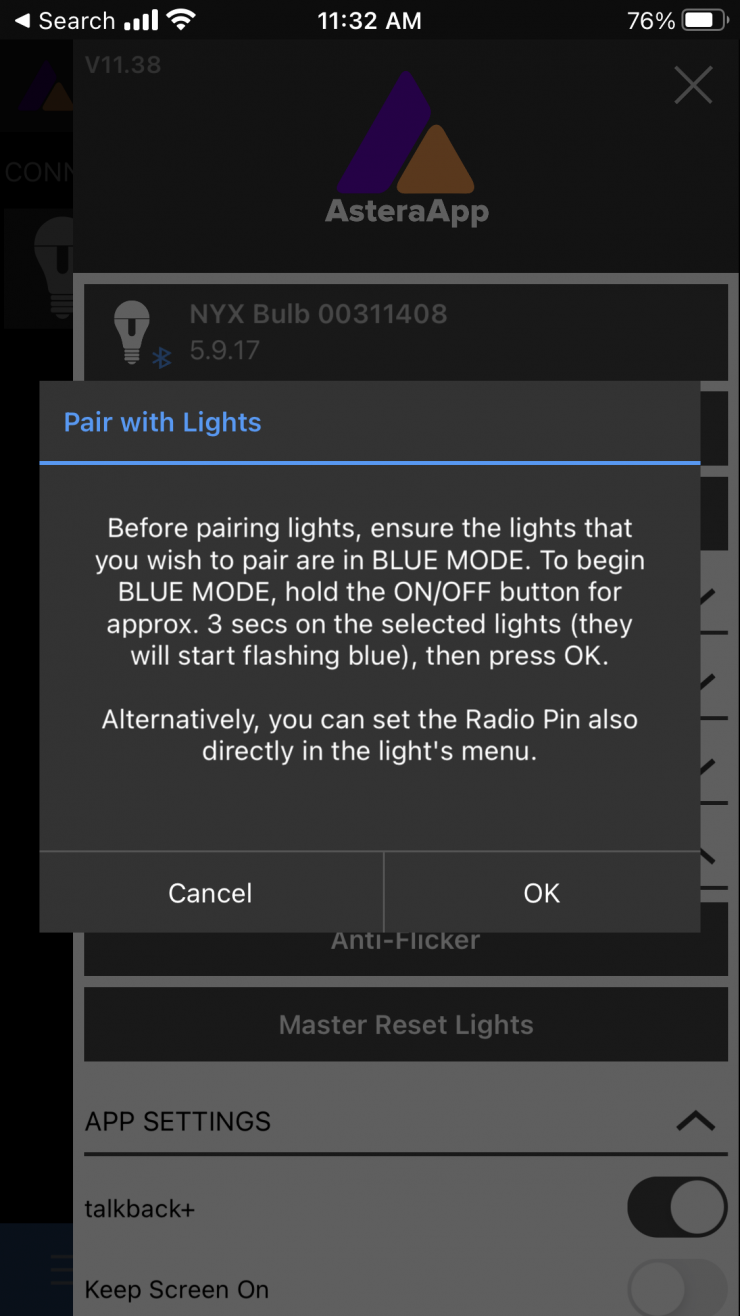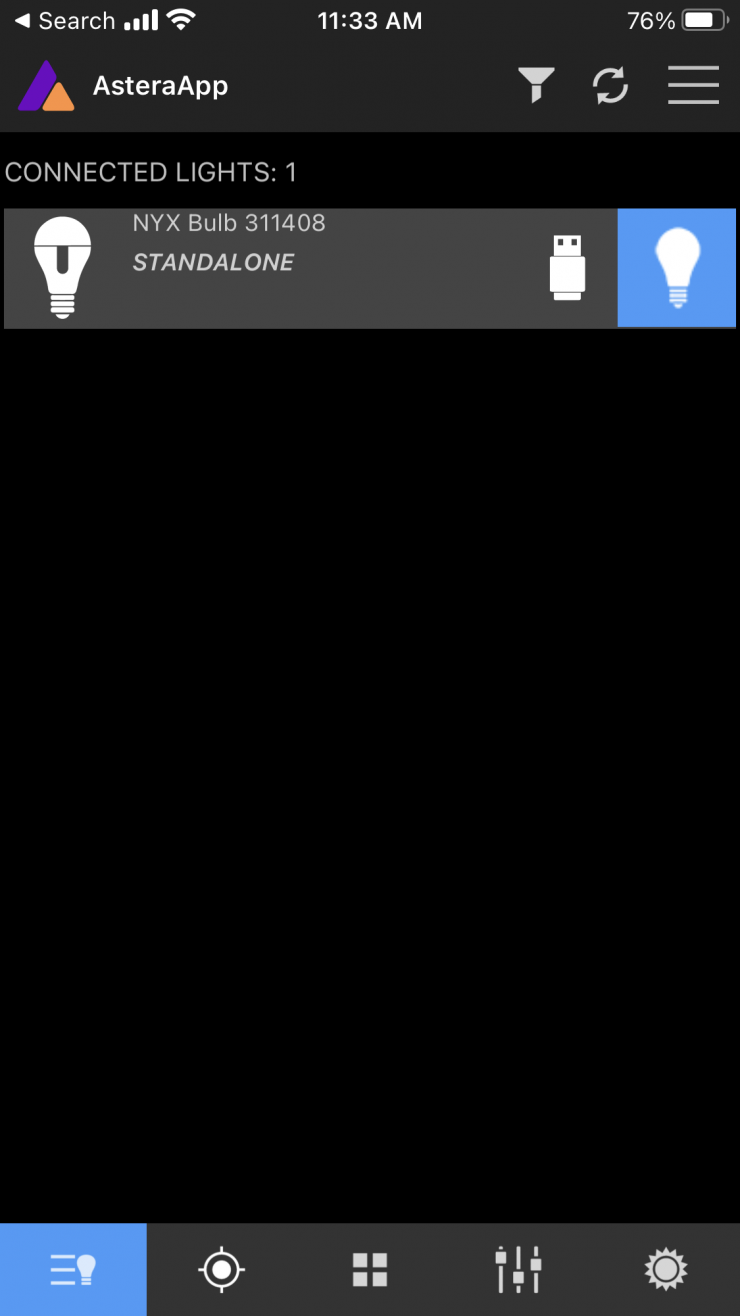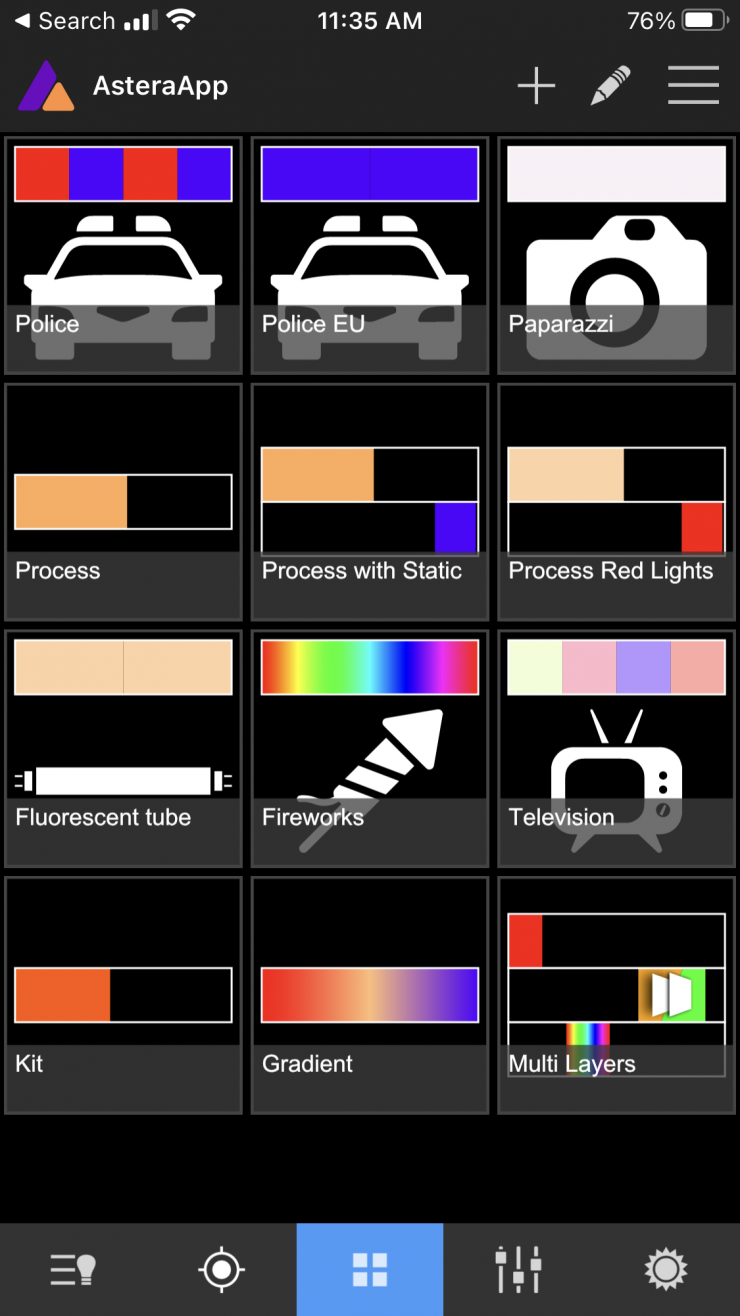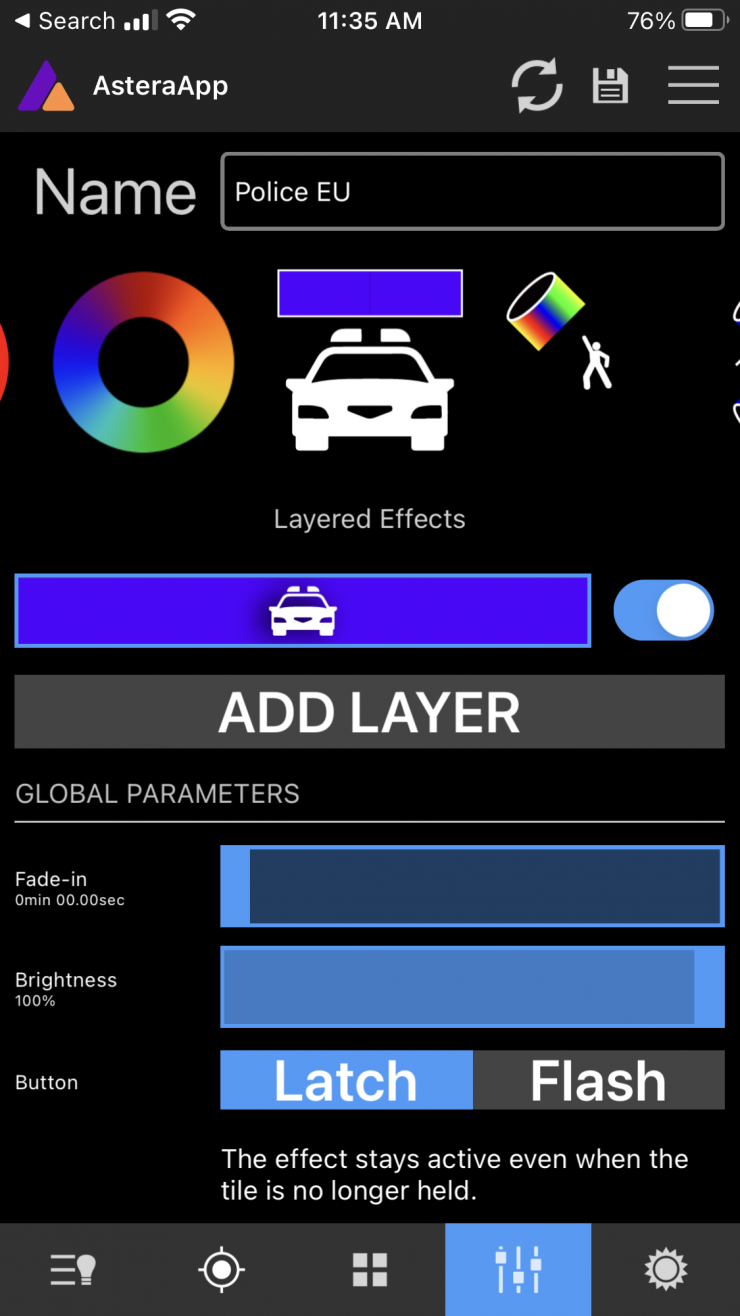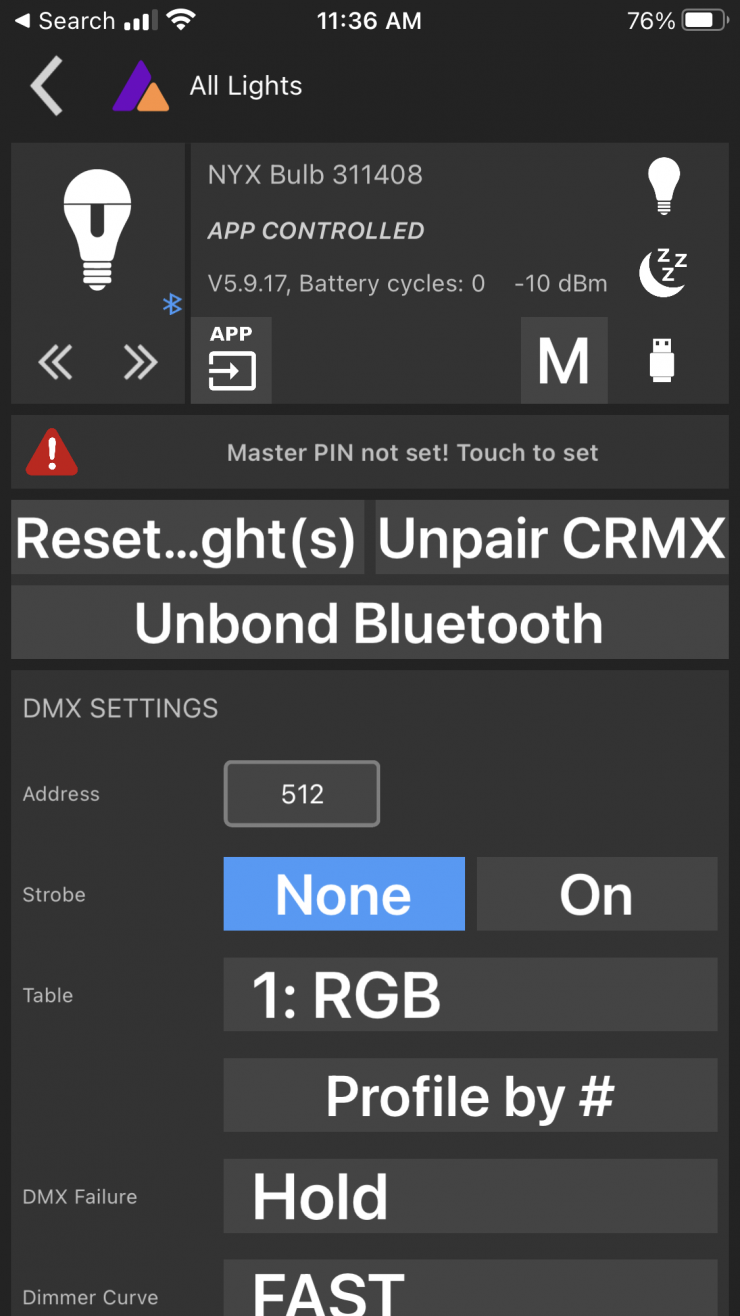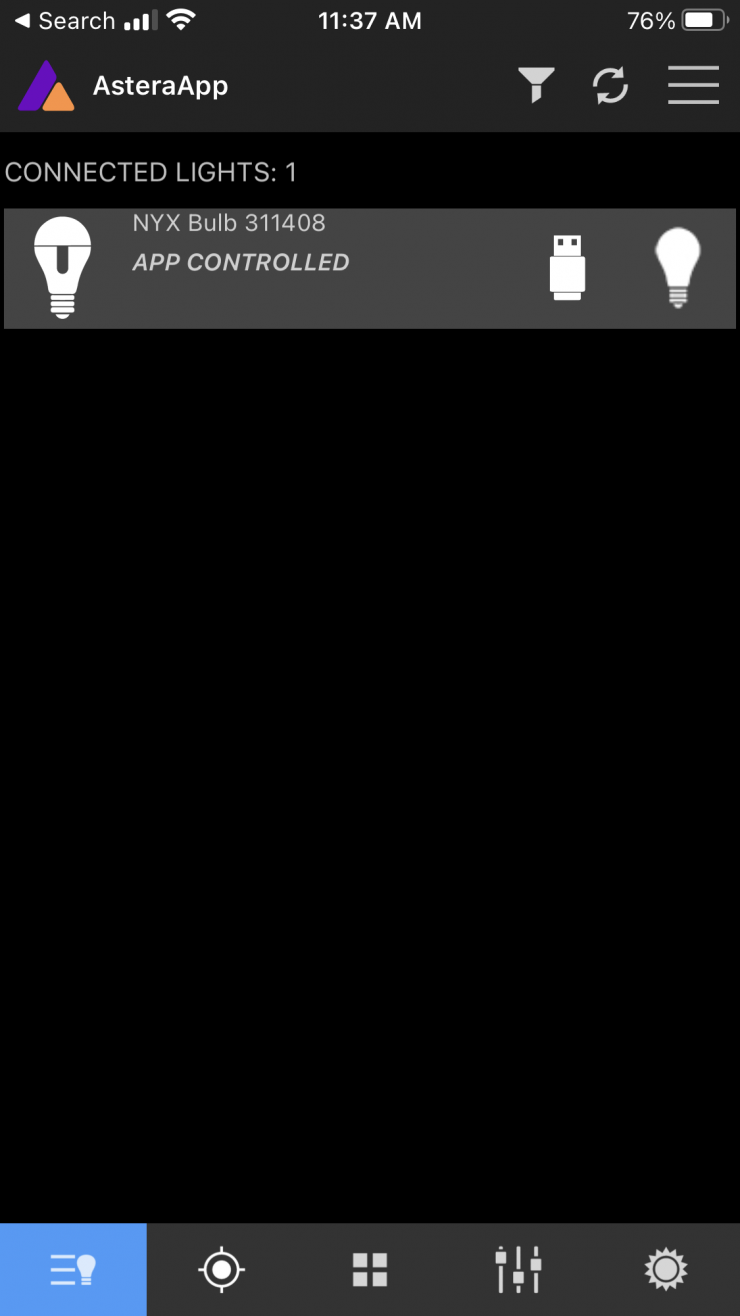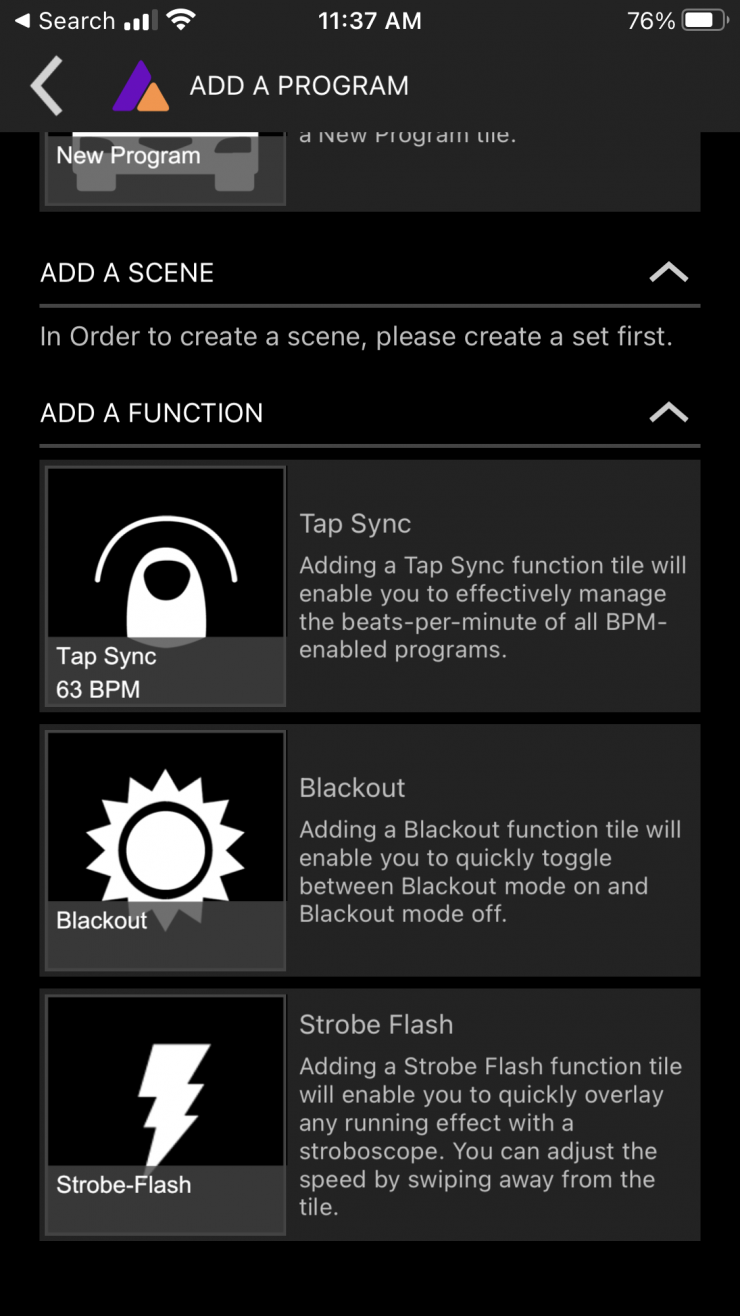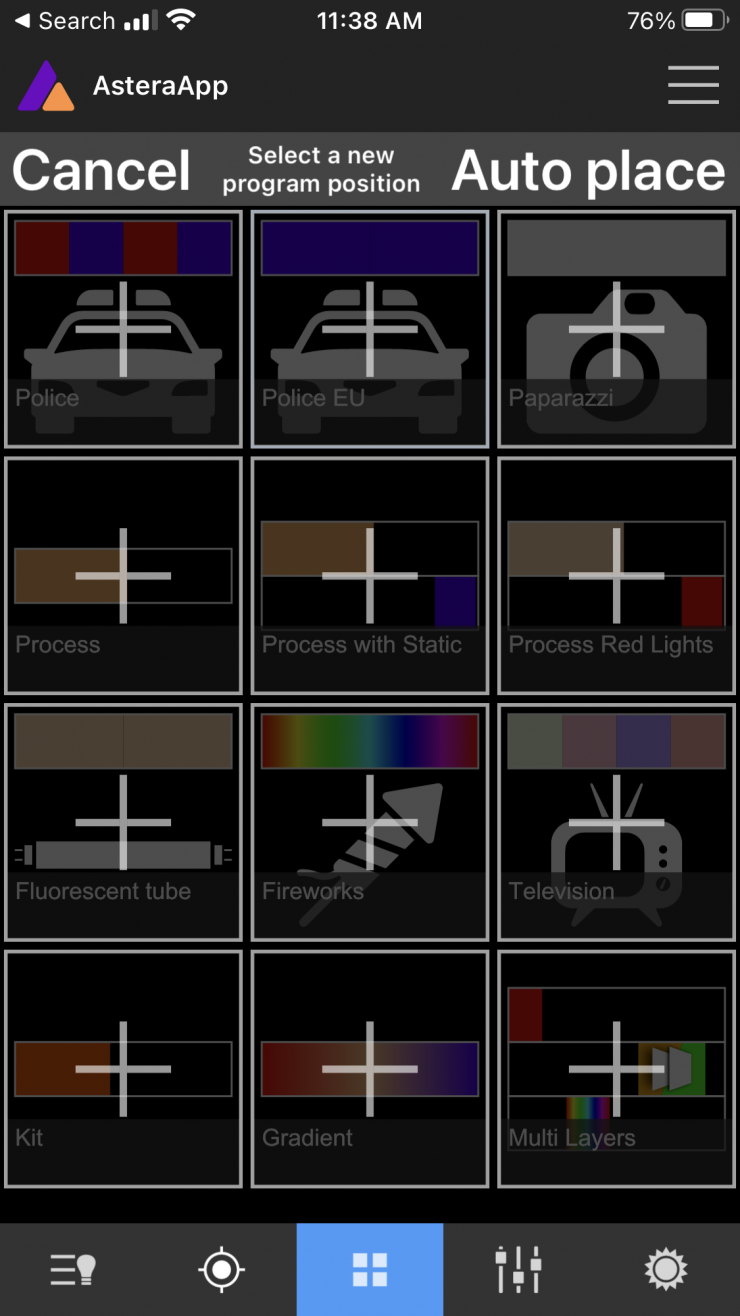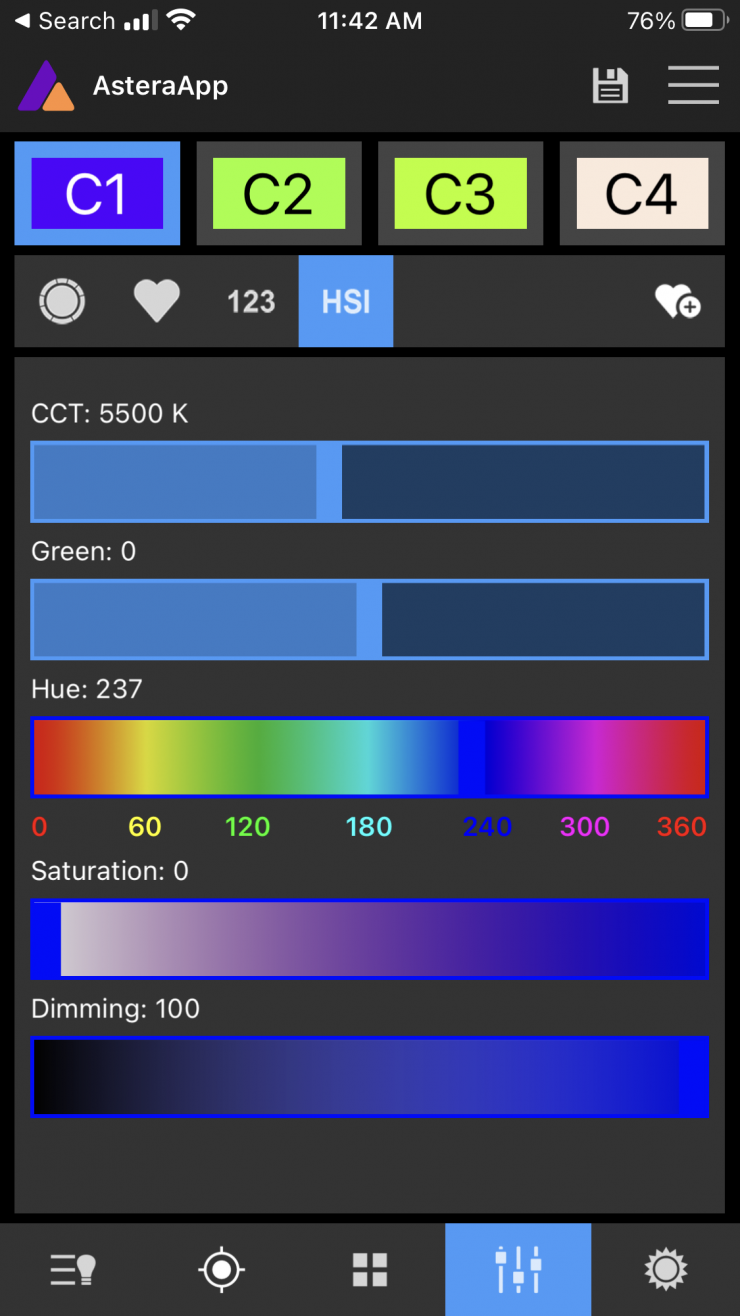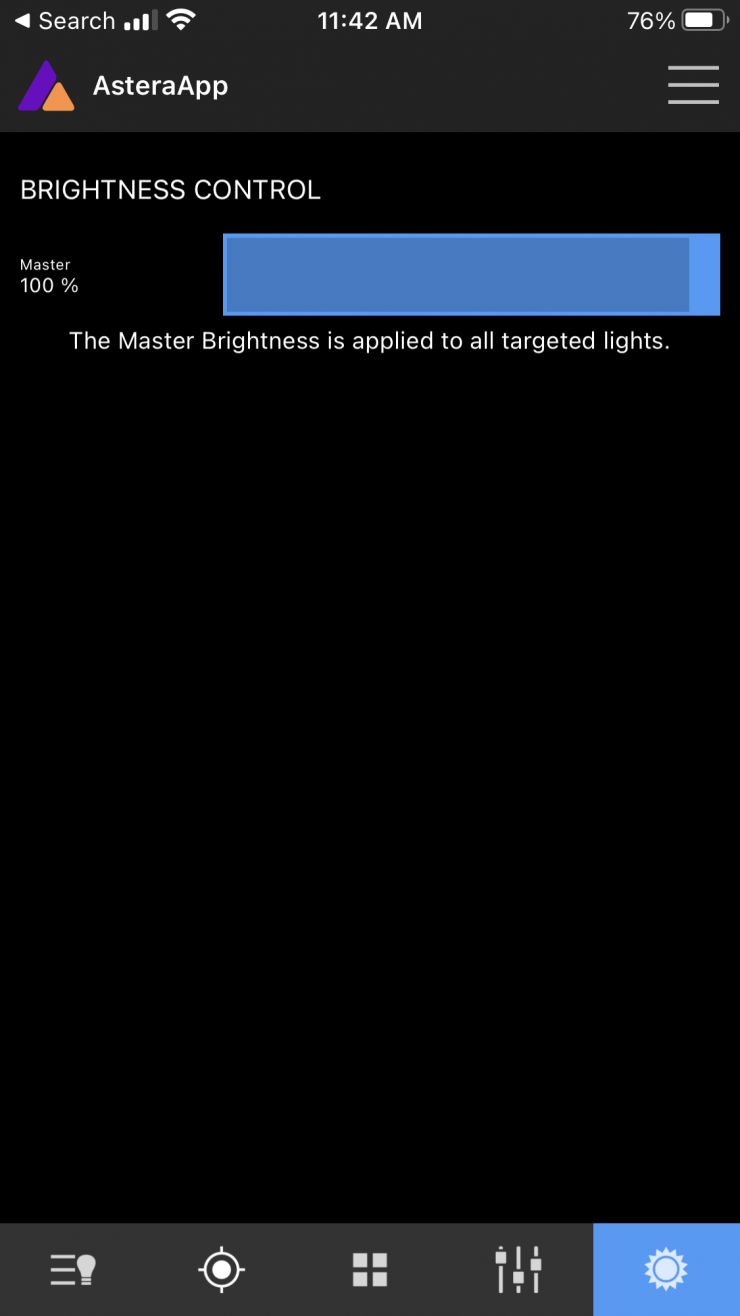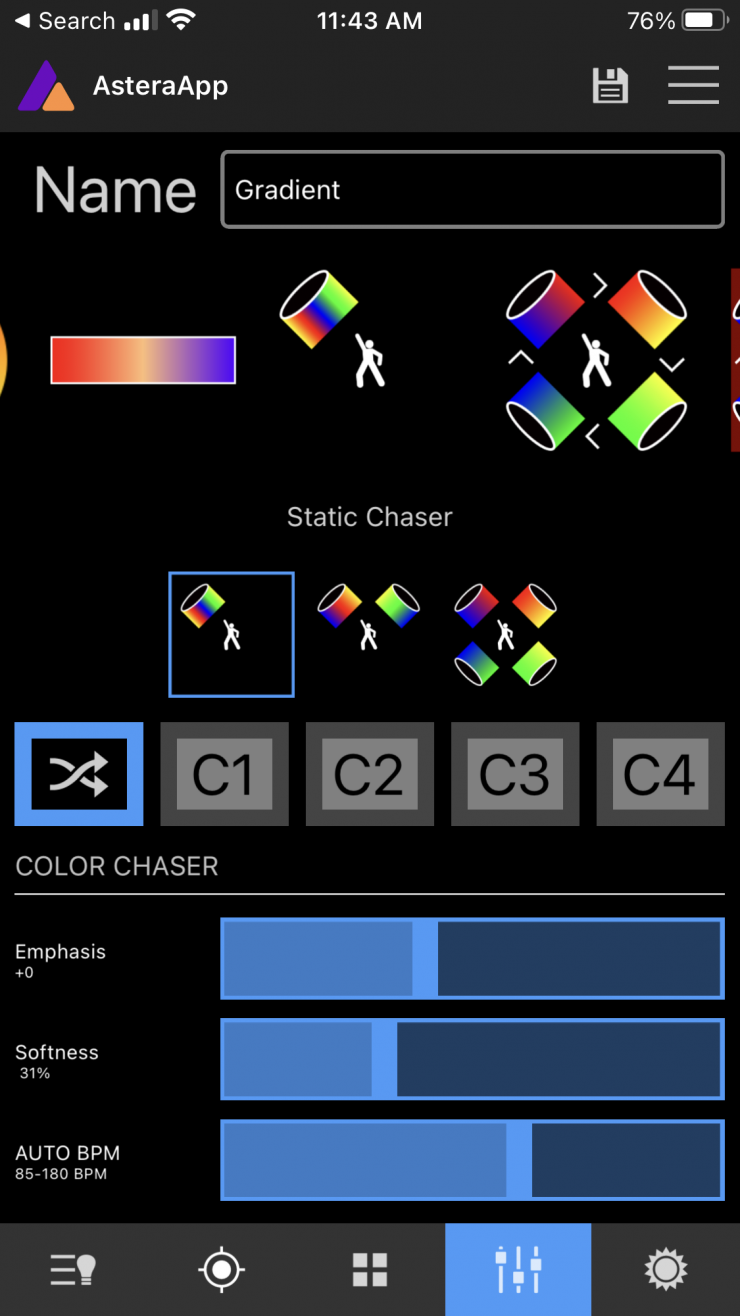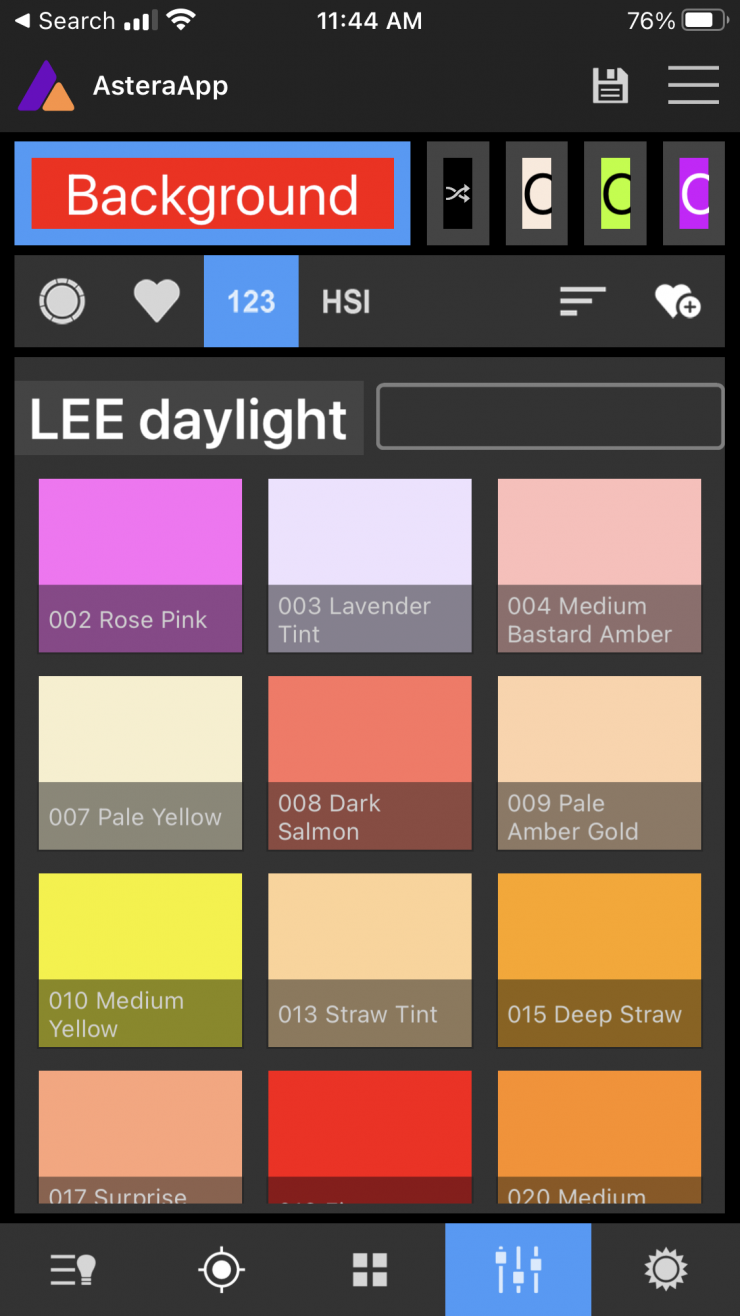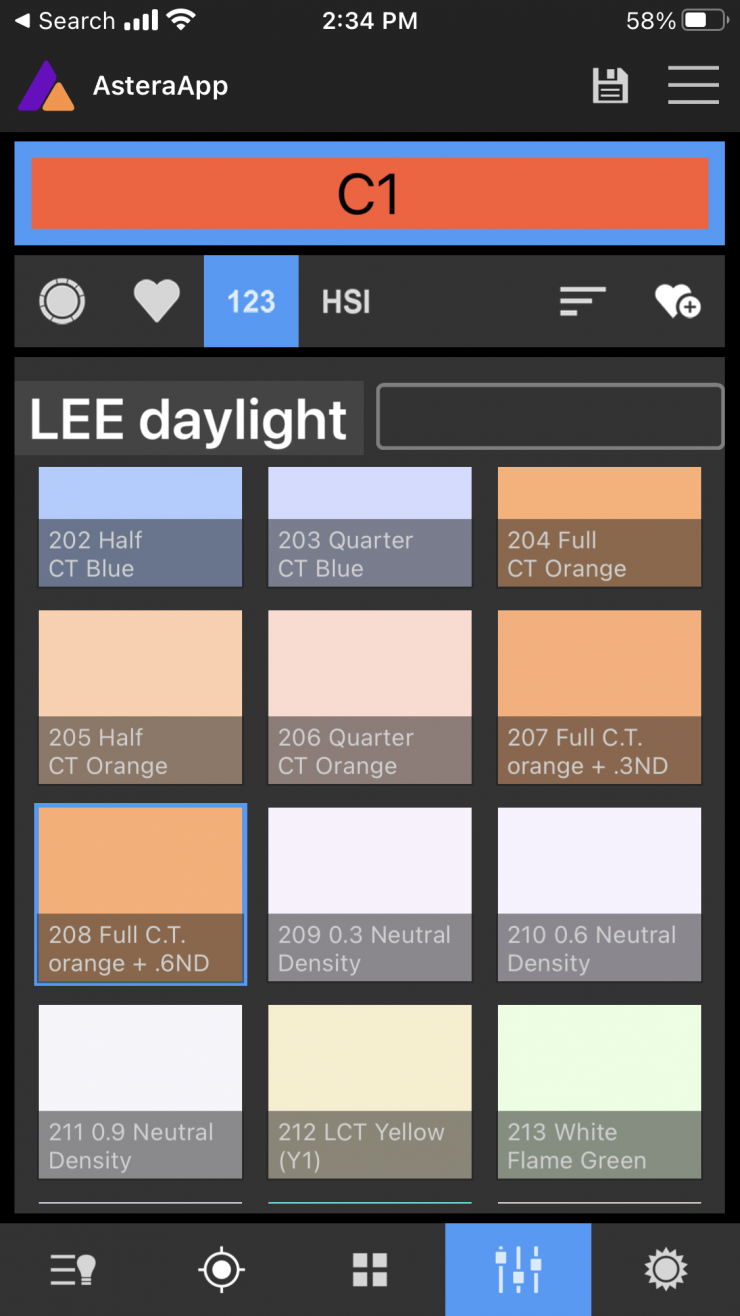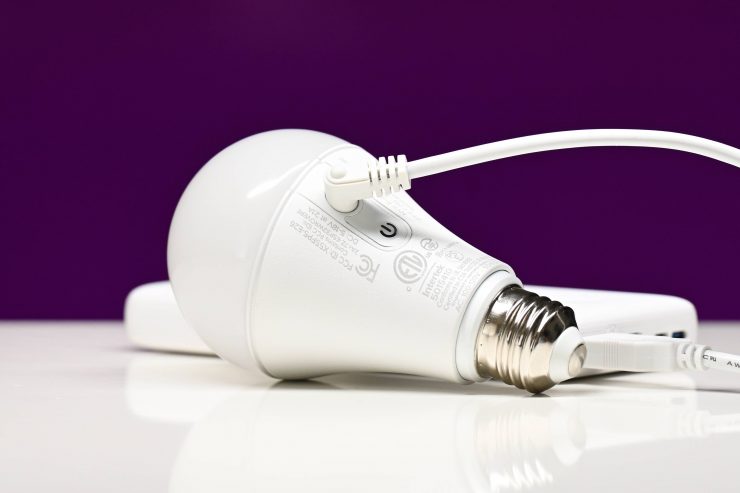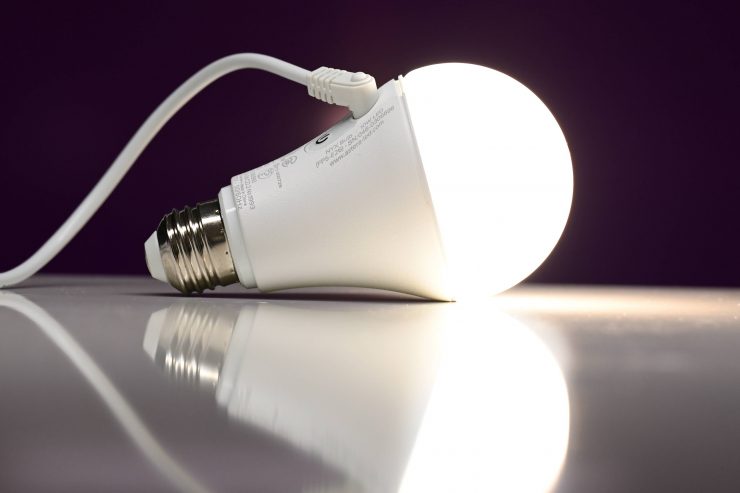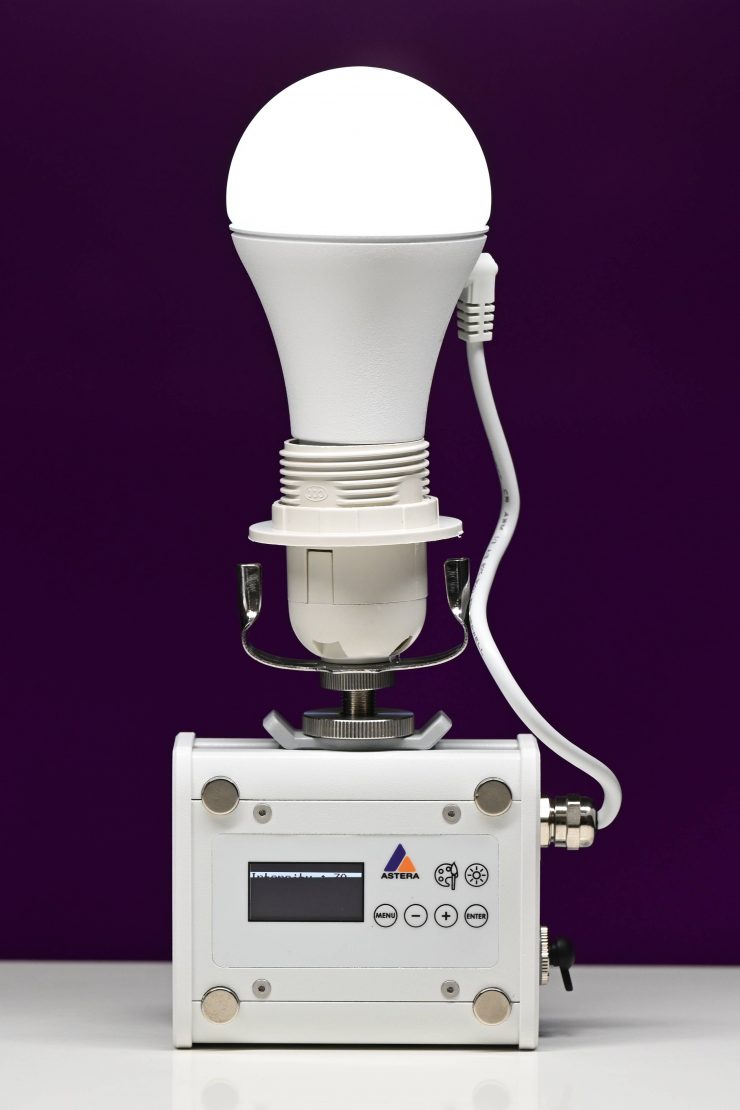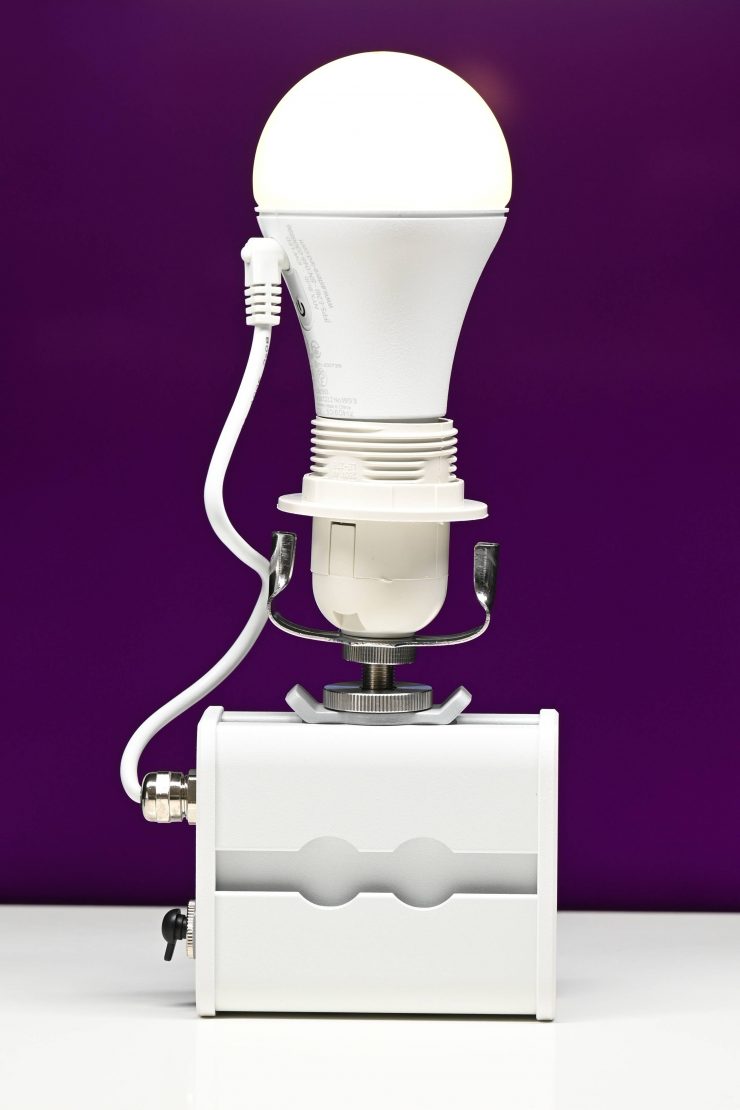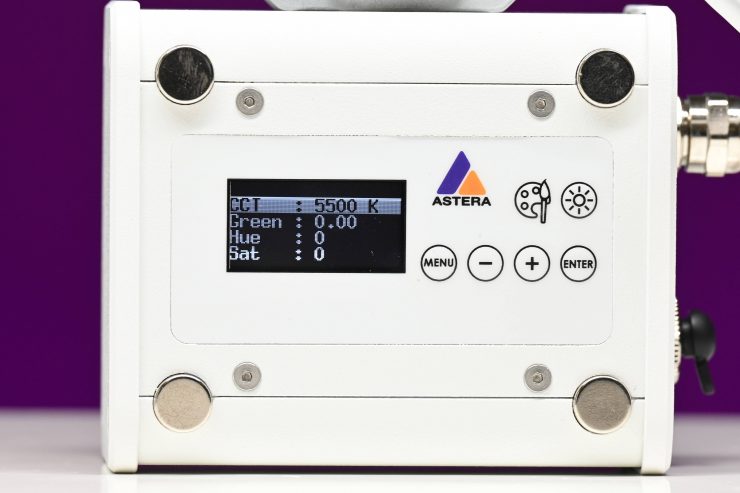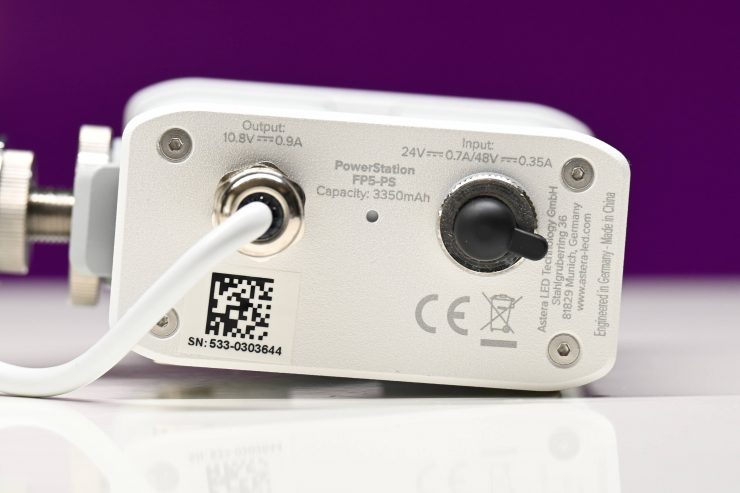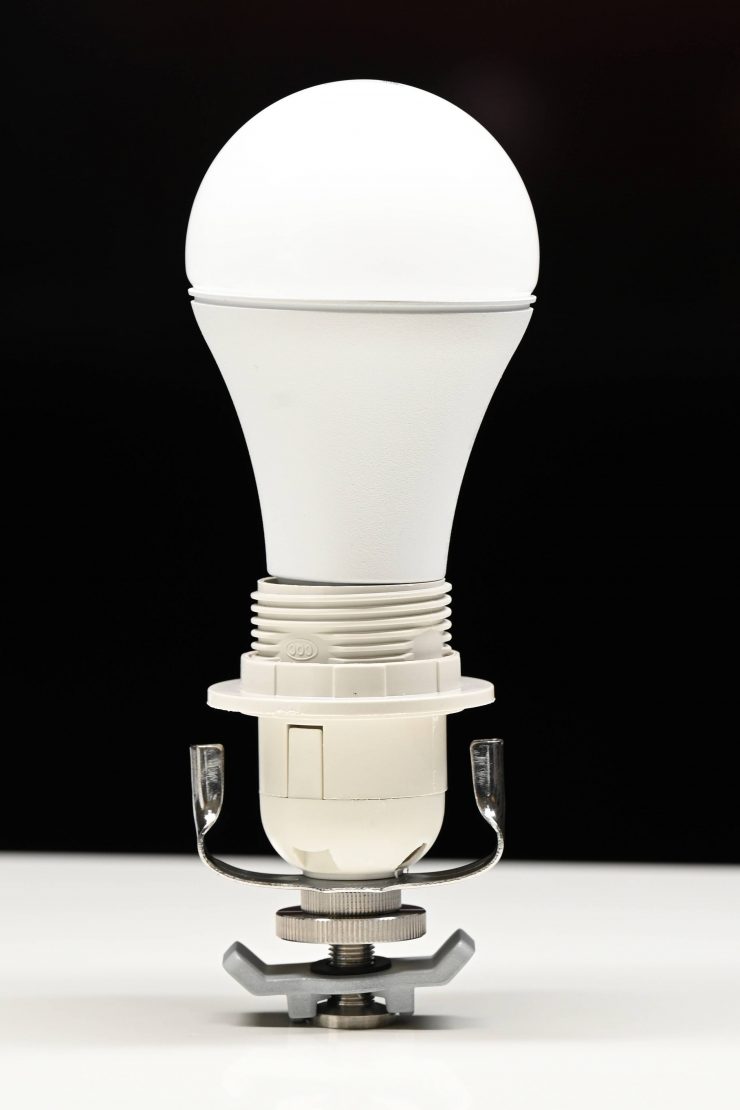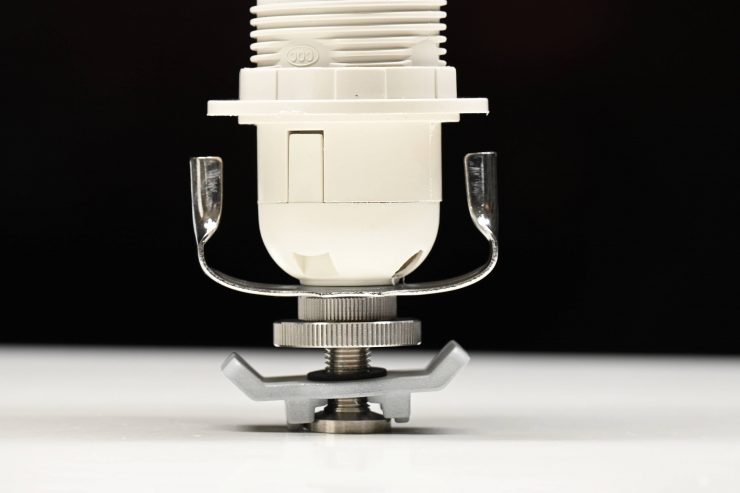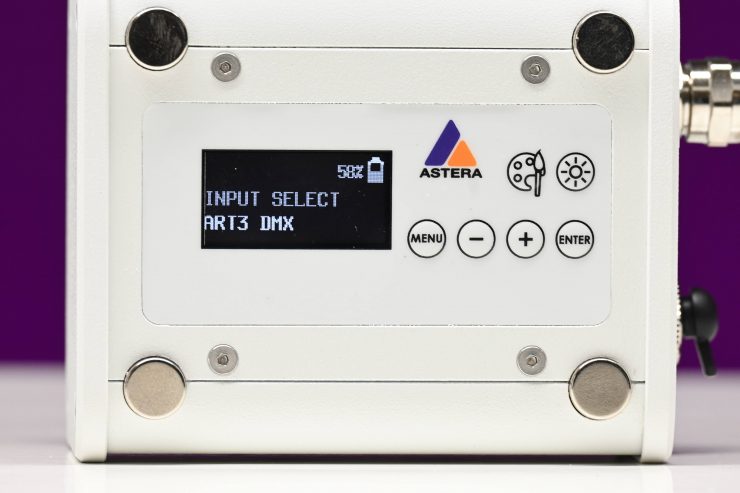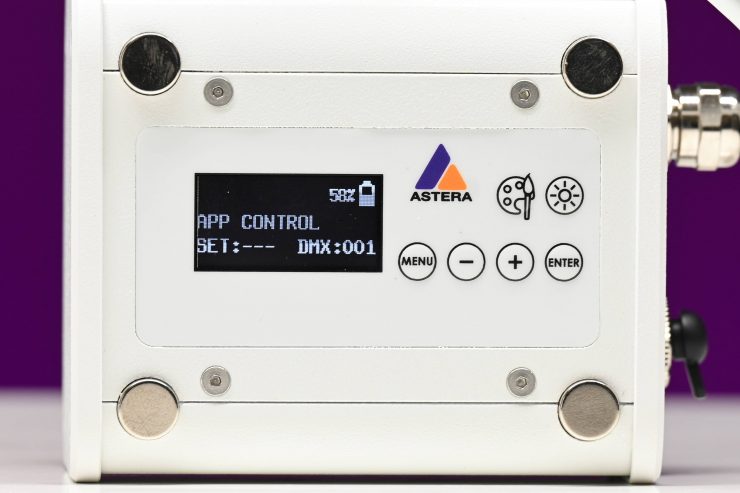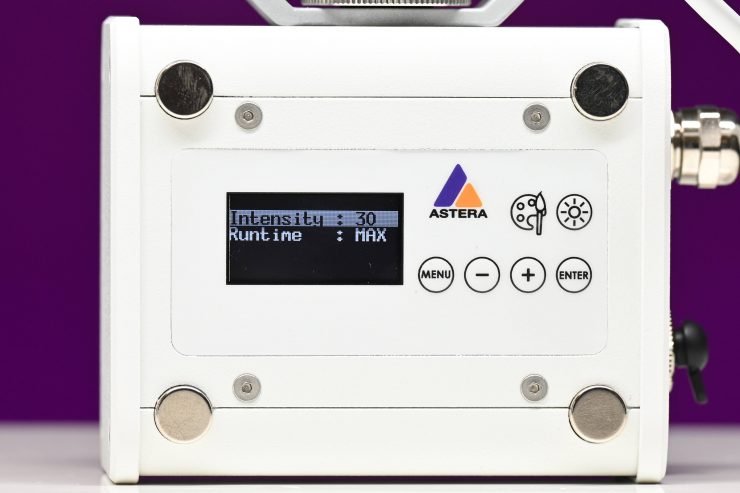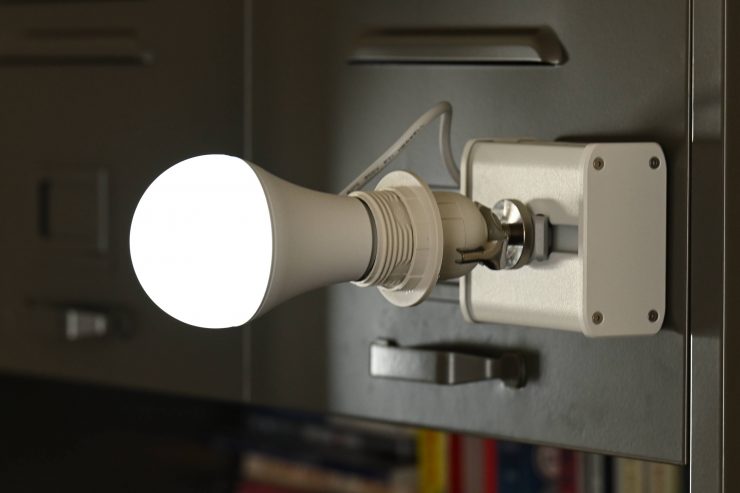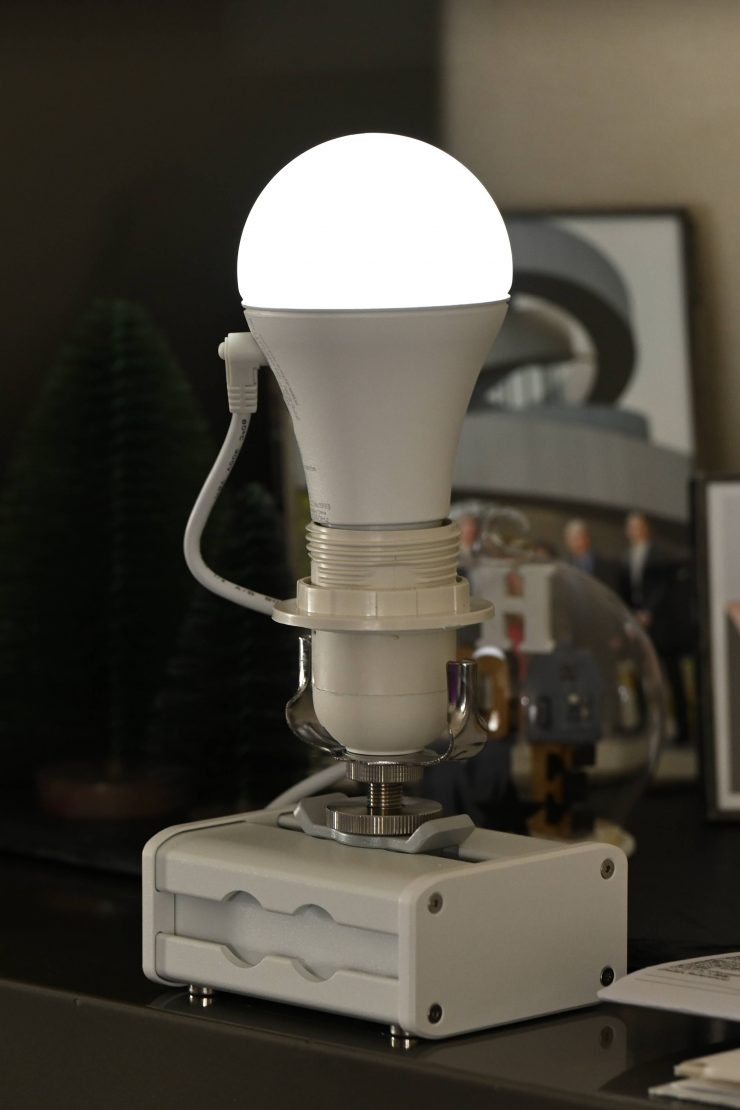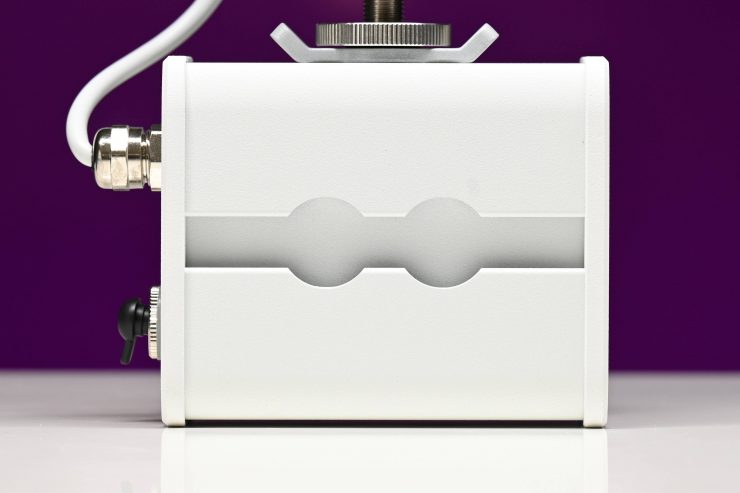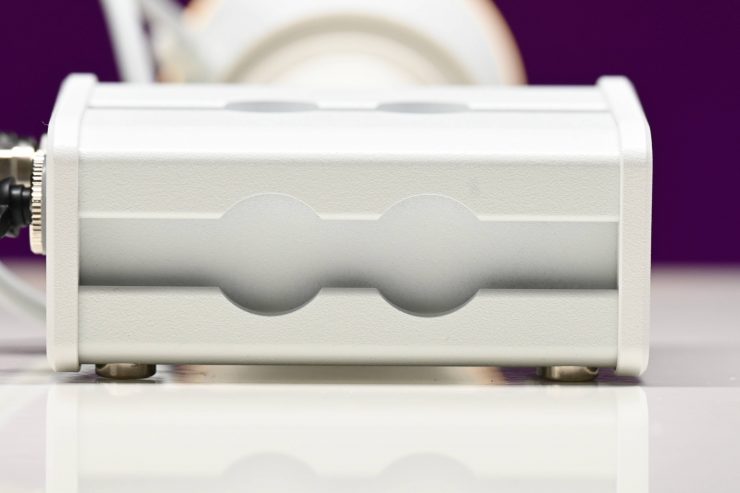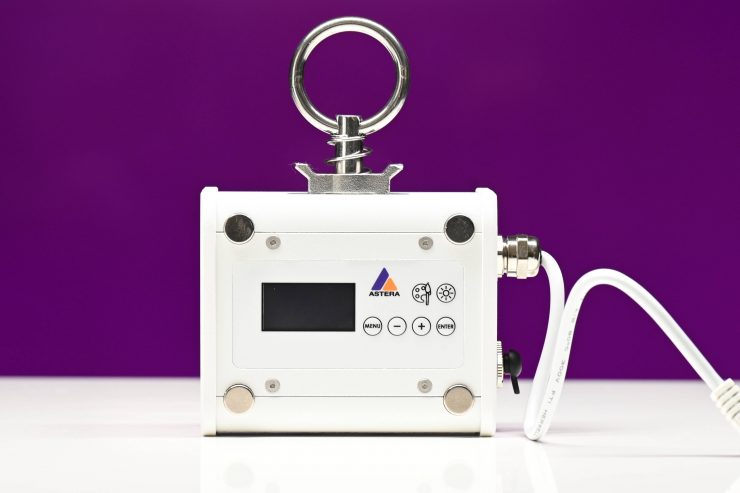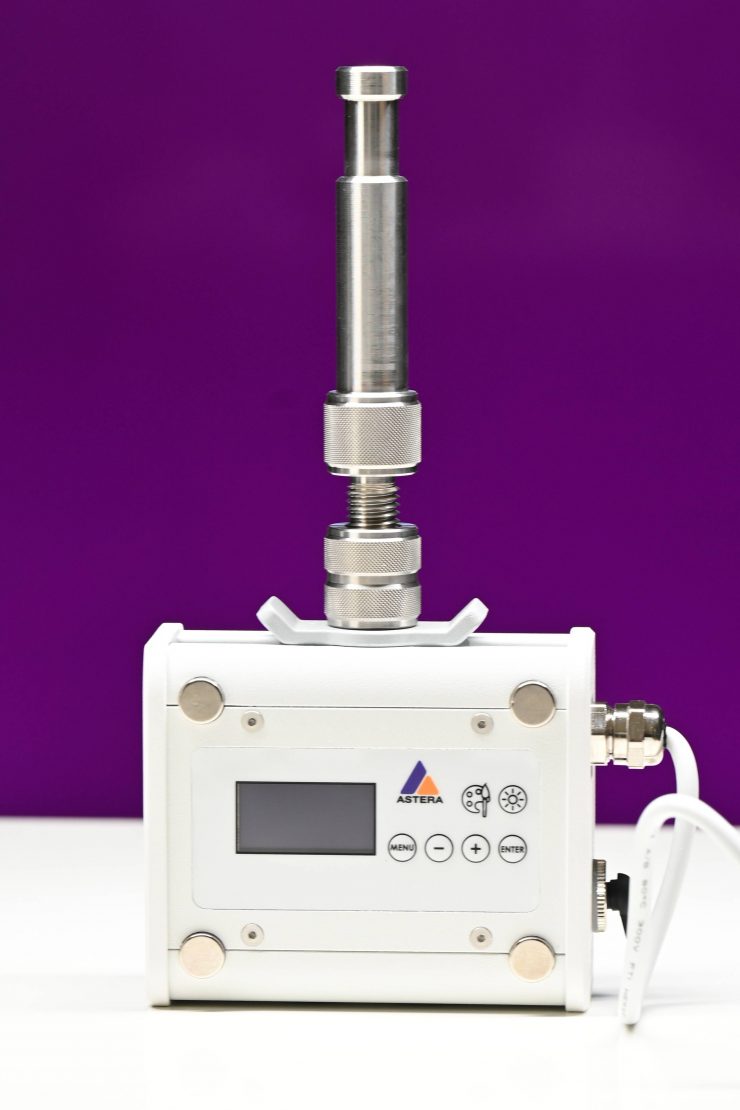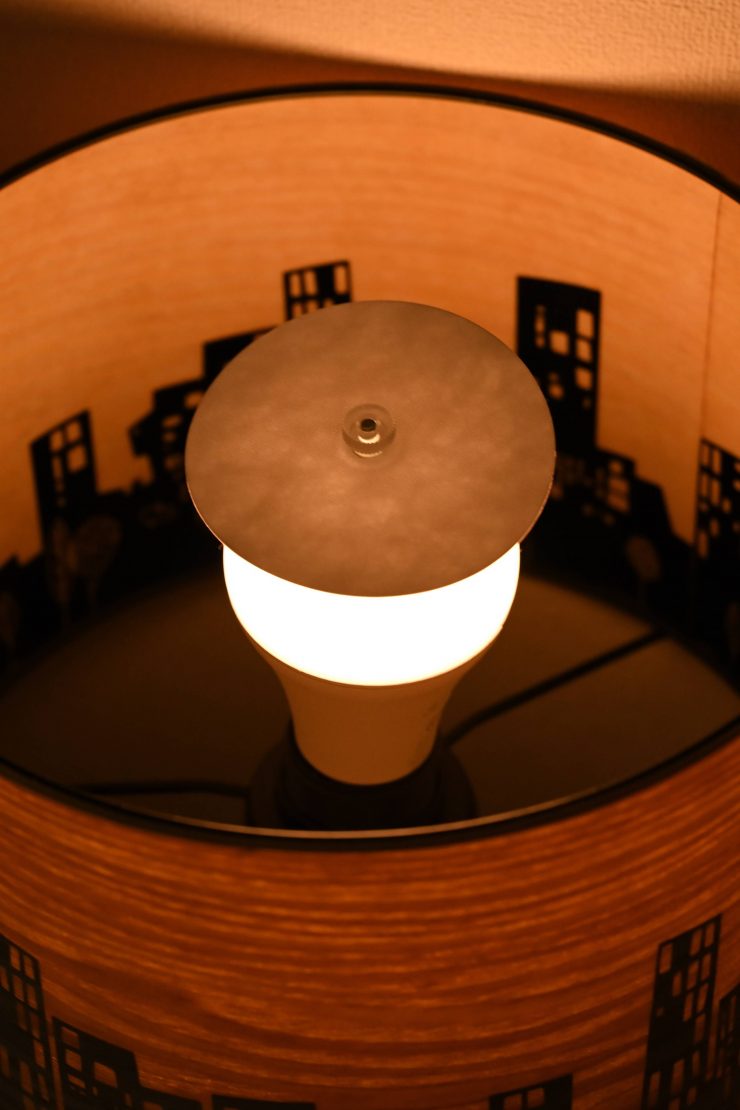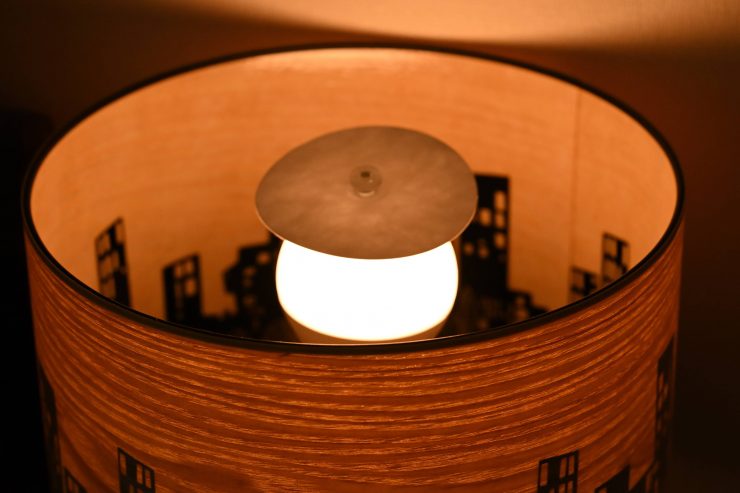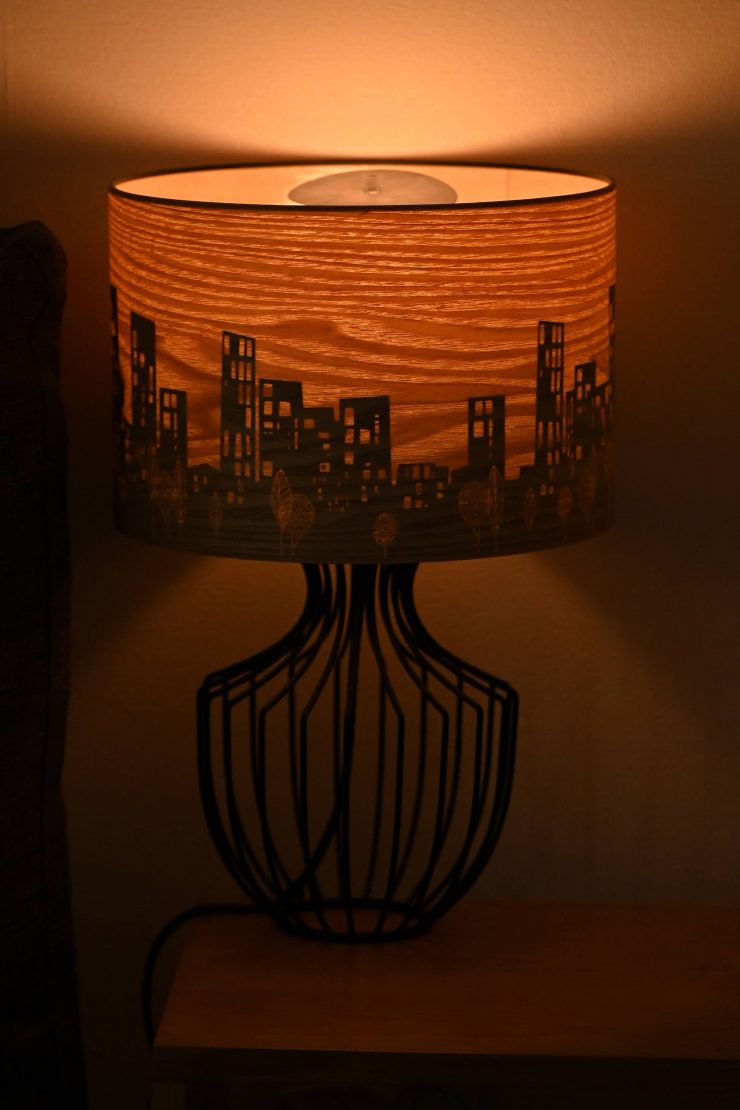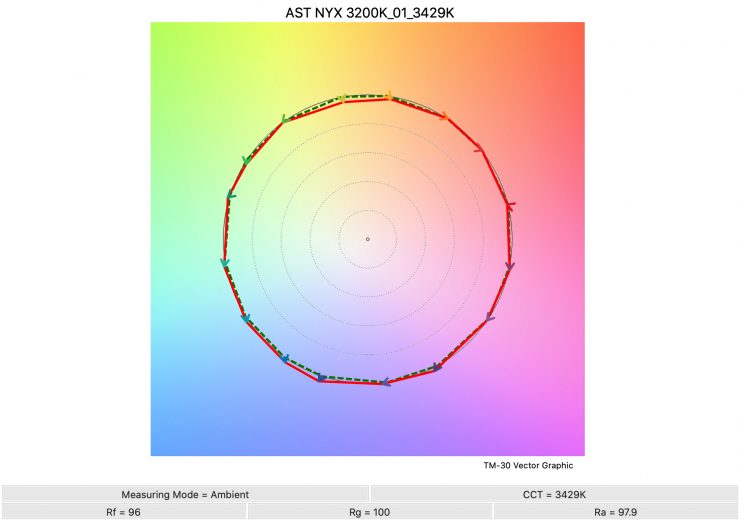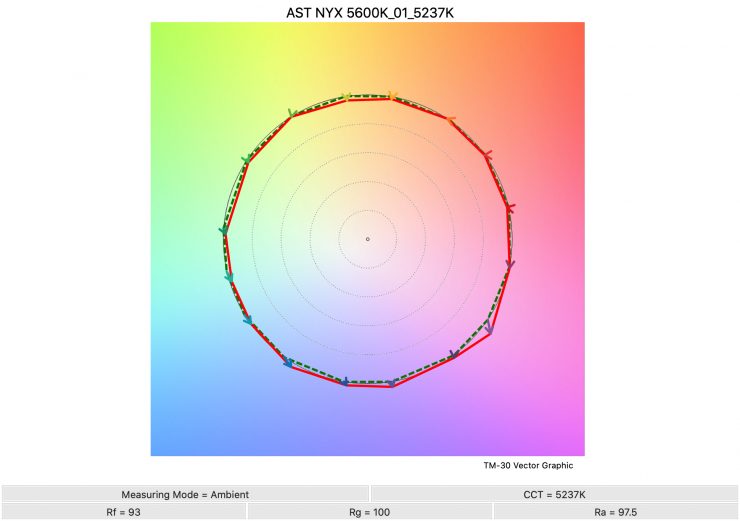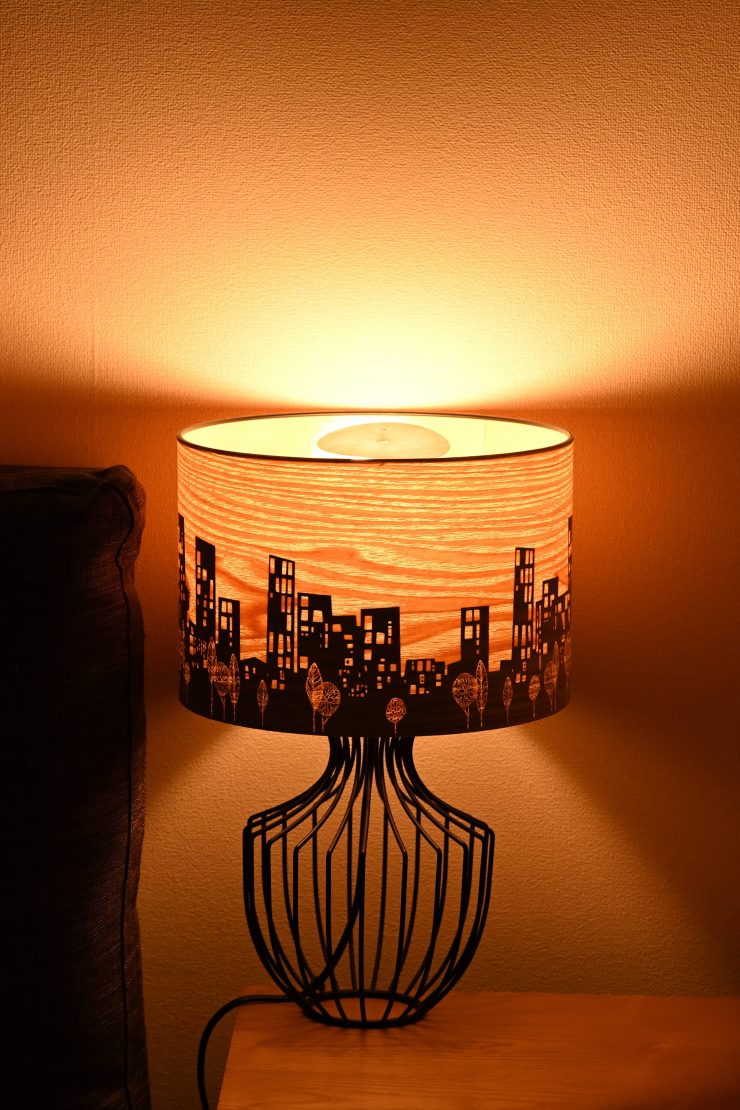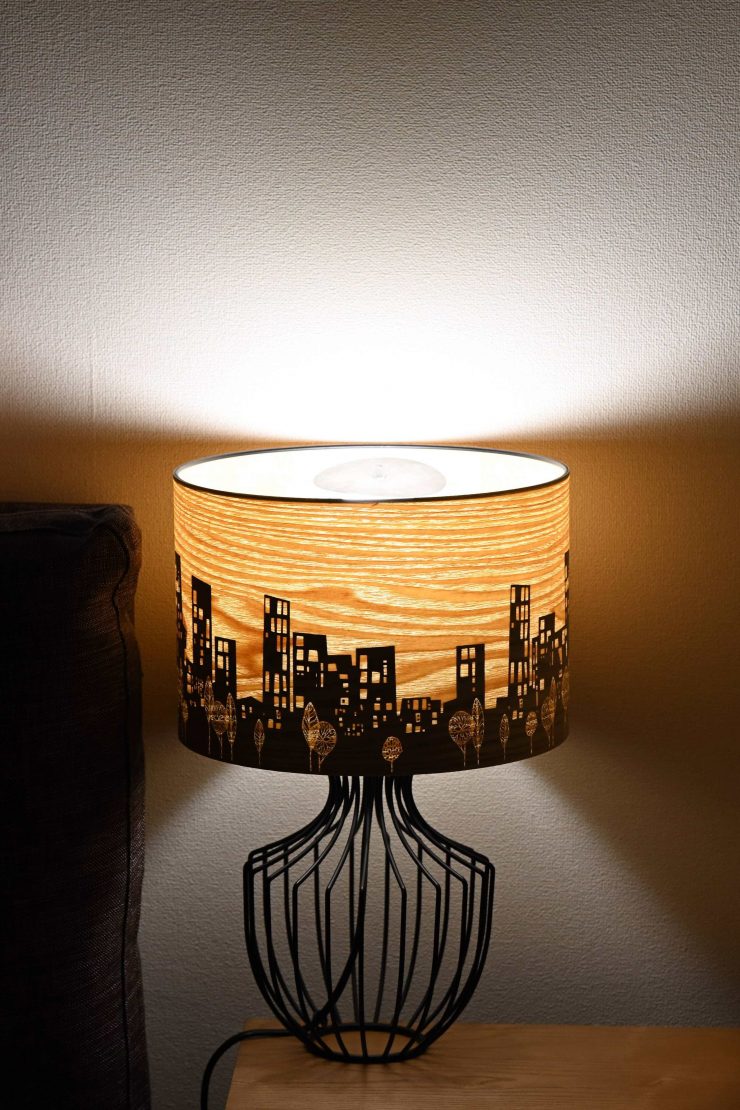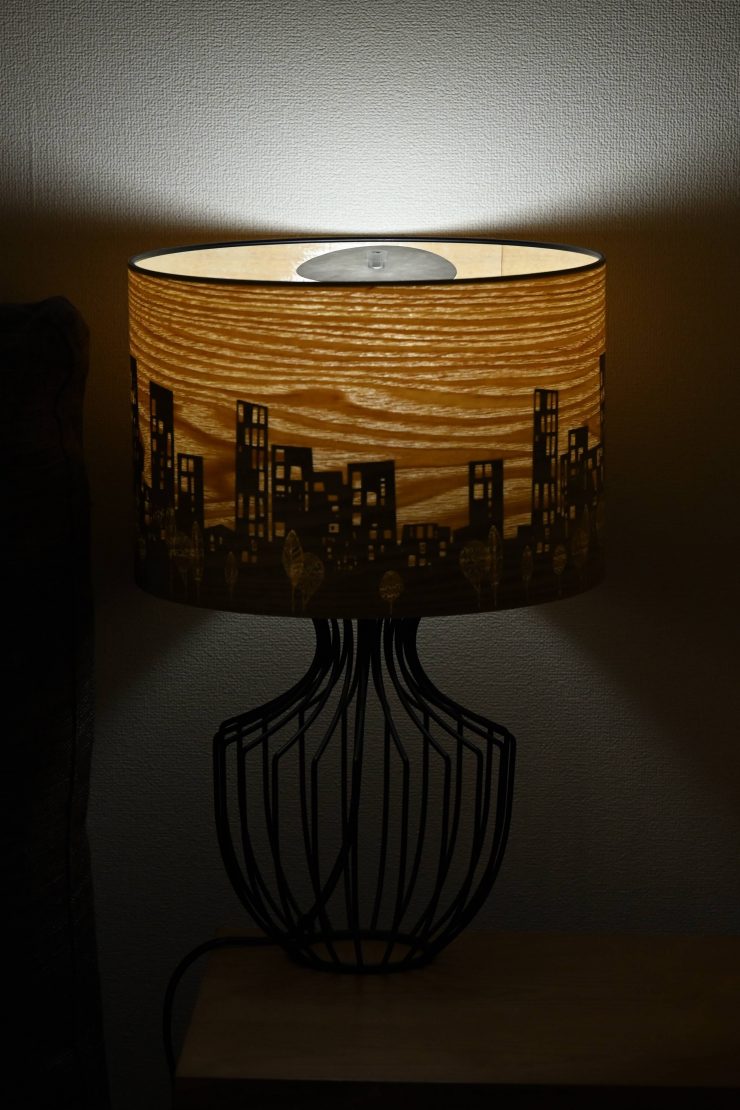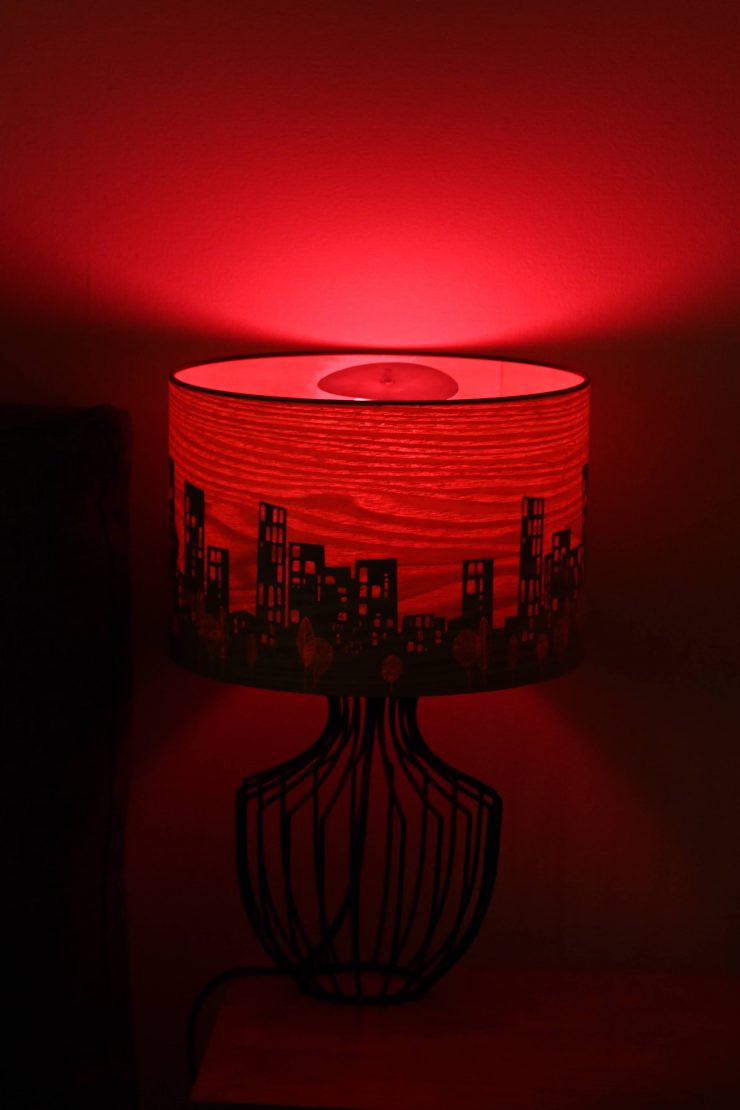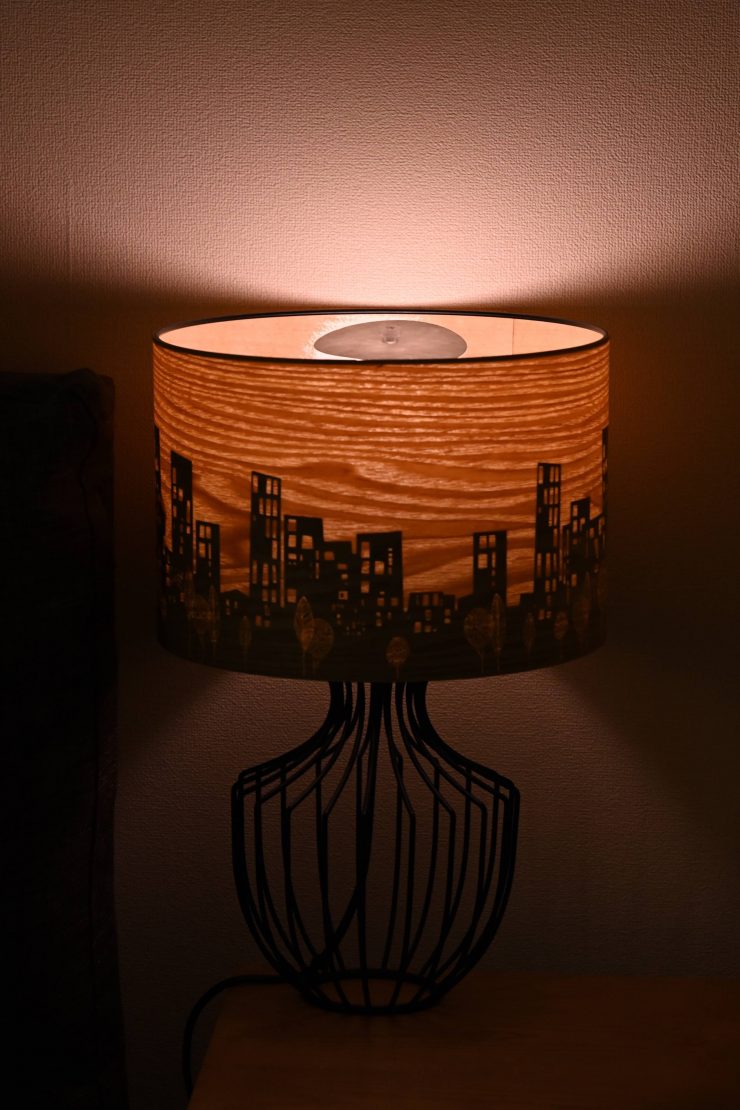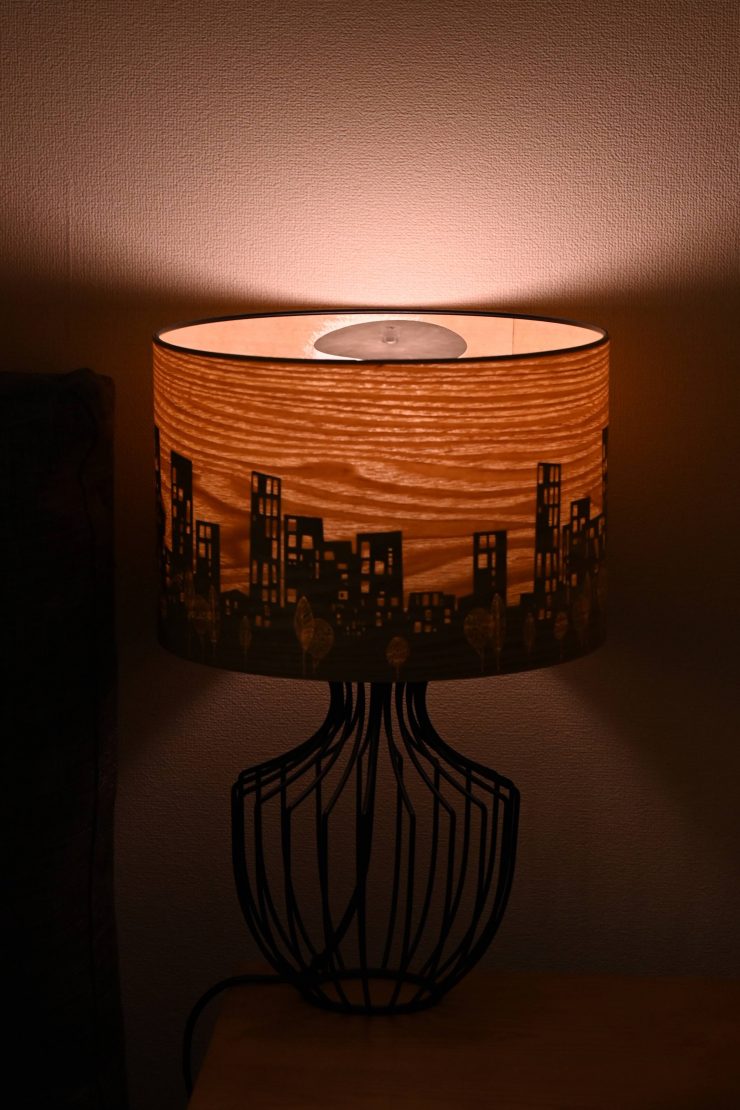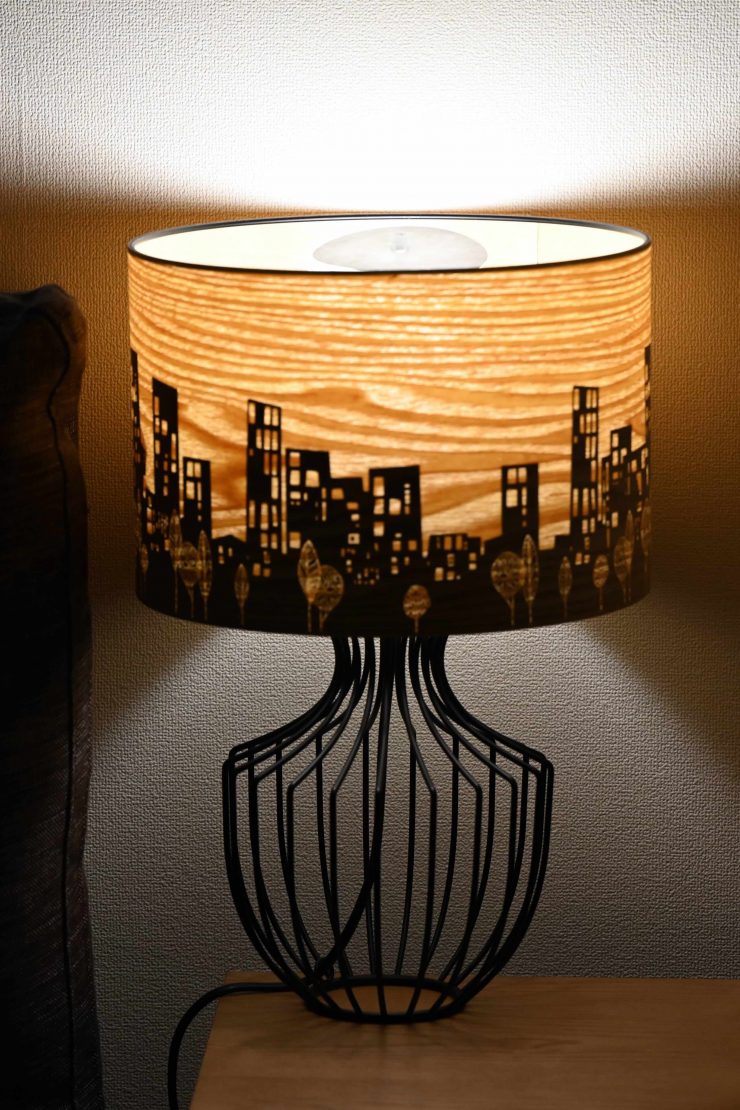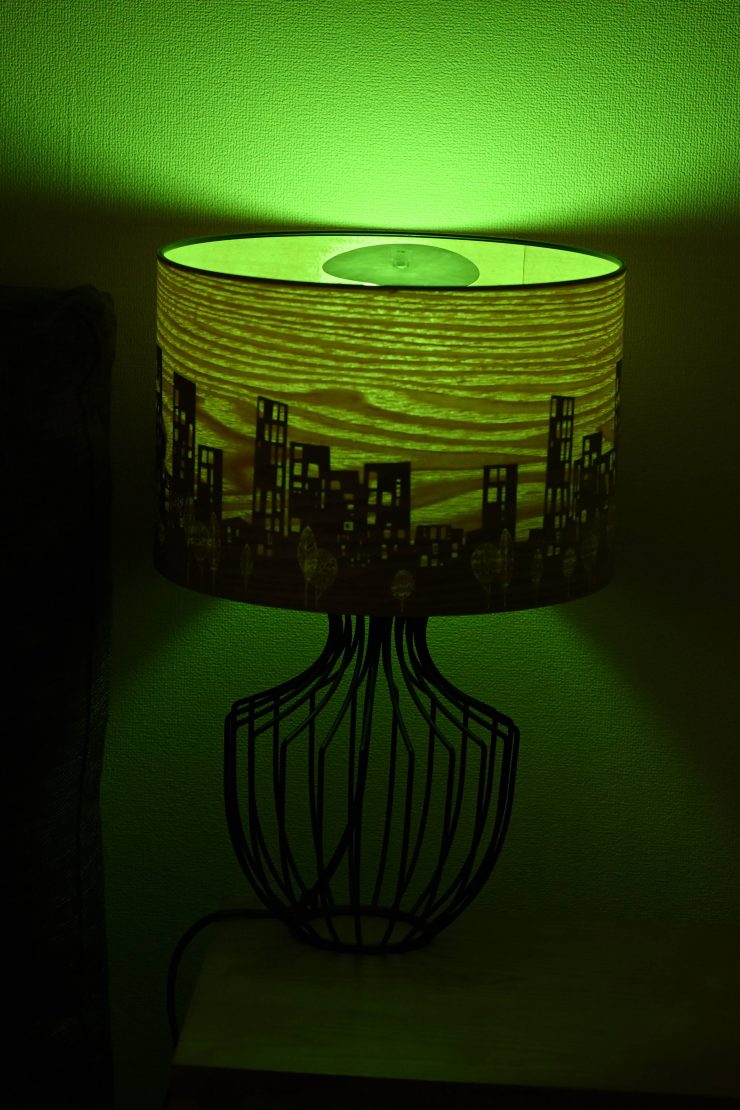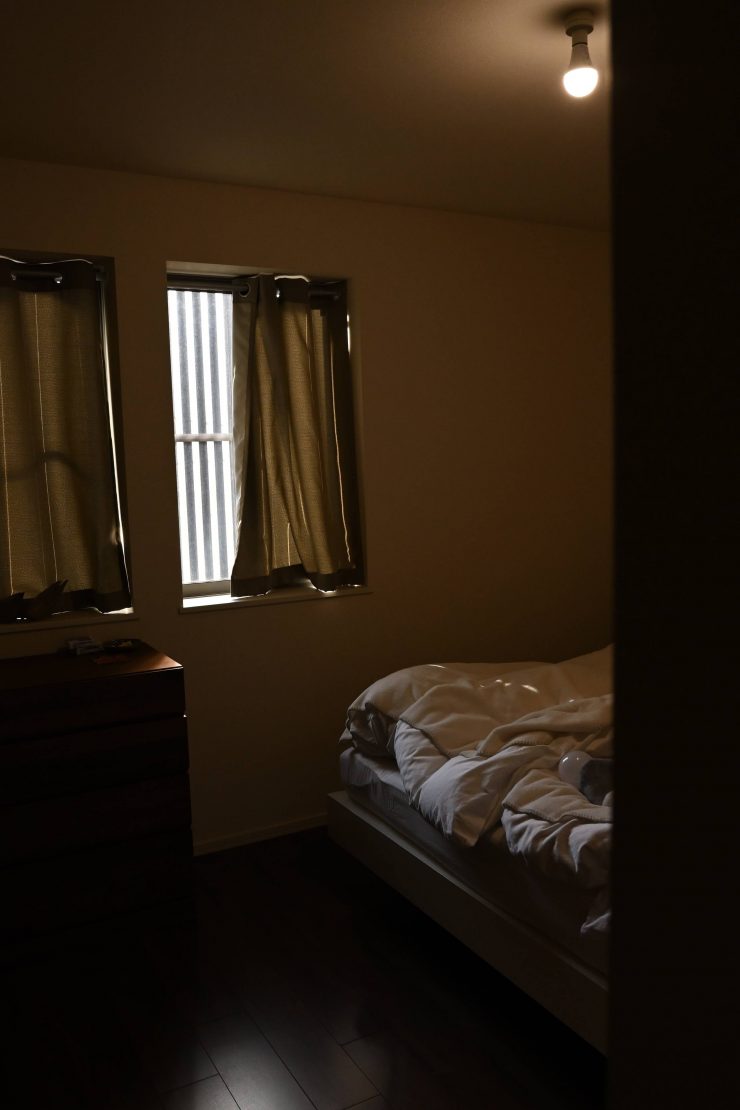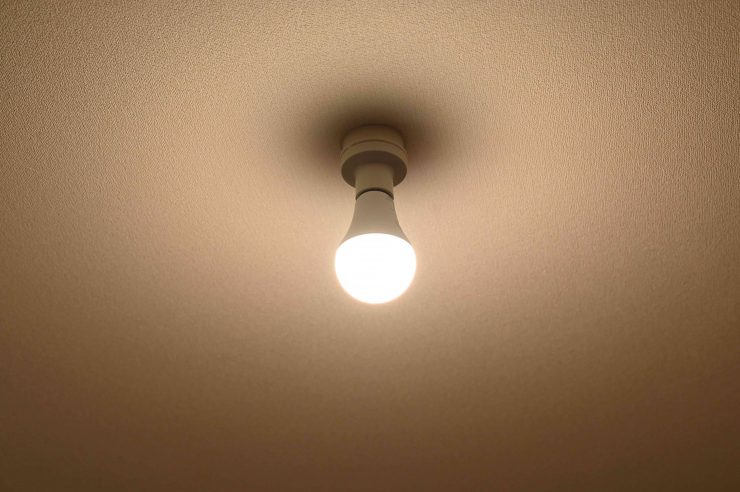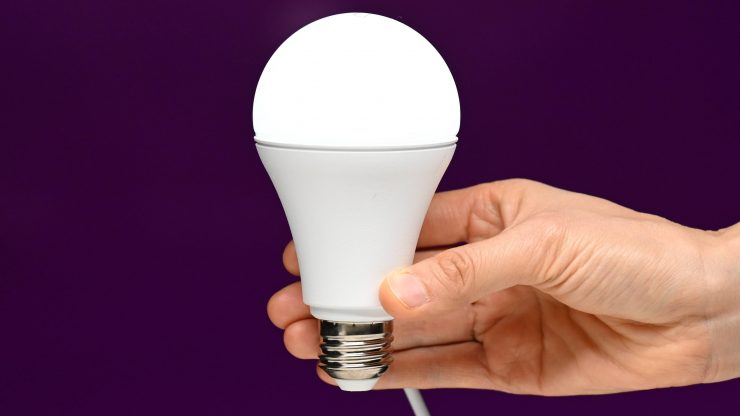
The Astera NYX Bulb was announced back in mid-2020, but recently new firmware was released that allows you to control the bulbs directly via Bluetooth through the Astera App on a smartphone or Tablet.
I thought it was about time I took a closer look at the NYX Bulb.
Key features
- Beam Spread: 180°
- Color Temperature: 3200 to 6500K
- TLCI: 96; CRI: 96
- RGBA + Mint 5-Color LED Chip
- Hue and Saturation Control
- Green/Magenta Correction
- Bluetooth, DMX, UHF, and CRMX Control
- 0 to 100% Continuous Dimming
- Multi-Voltage AC and DC Operation
What is it?
The NYX Bulb is the same size as a standard LED bulb. It draws 10W and it uses a standard E26/E27 fitting. According to Astera, it was the first color-tunable LED bulb that was developed specifically for professional film, stage, and event productions to come to market.
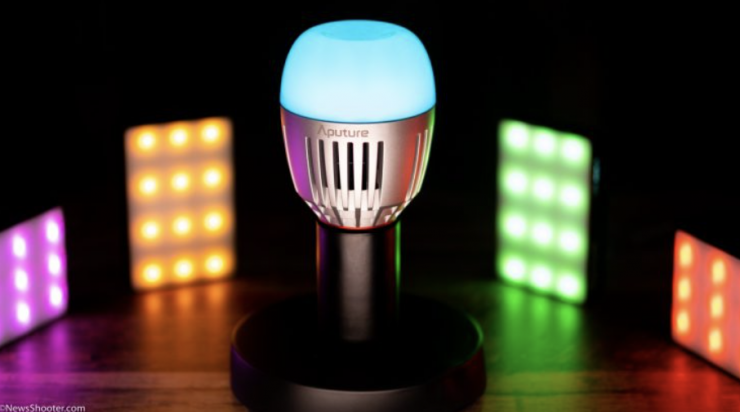
Just to clarify, it was not the first color-tunable bulb, but it was the first one you can actually buy. Aputure’s Accent B7c LED RGBWW Light was announced before the NYX Bulb, but it took a long time to get to market.
The inspiration behind the name of the bulb came from the Greek Goddess of the Night.
Who is the NYX aimed at?
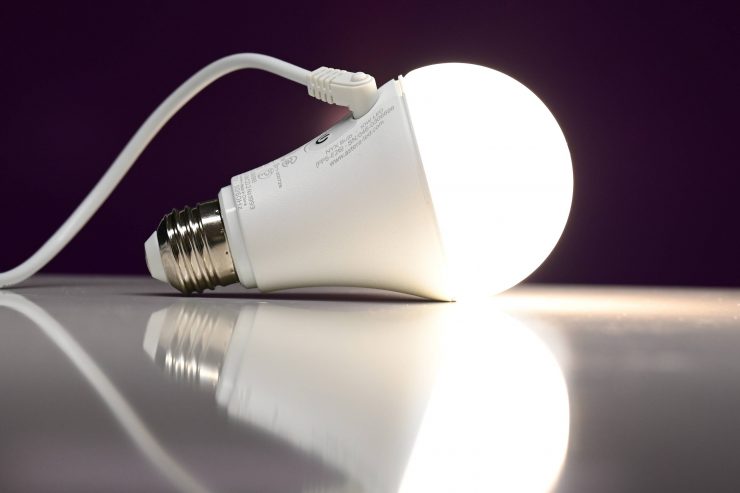
The NYX Bulb is designed for gaffers, DoPs, lighting and set designers, visual artists, and anyone who wants to create high-quality ‘practical’ fixtures.
There is no reason why anyone couldn’t use these bulbs. It really is up to your imagination as to what you could use them for.
Size & Weight
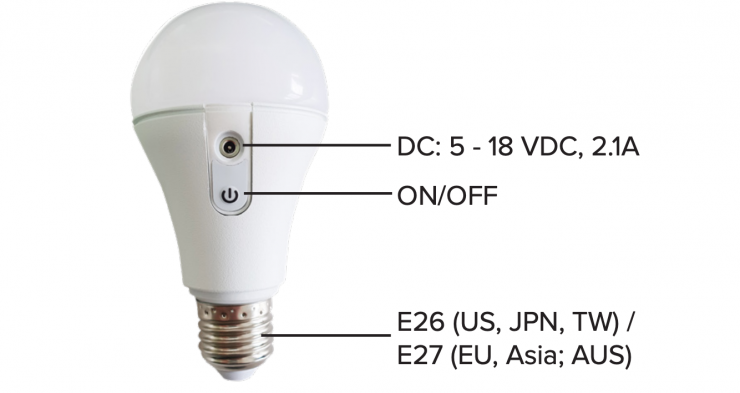
The NYX Bulbs weigh 240 g (0.53lb). As I mentioned earlier, they are the same size as a regular bulb.
Please be very aware that you need to purchase the correct version for where you live. There is no single universal solution as that would violate CE and UL standards.
Above you can see a comparison between a standard LED light bulb next to the Astera NYX.
Build Quality
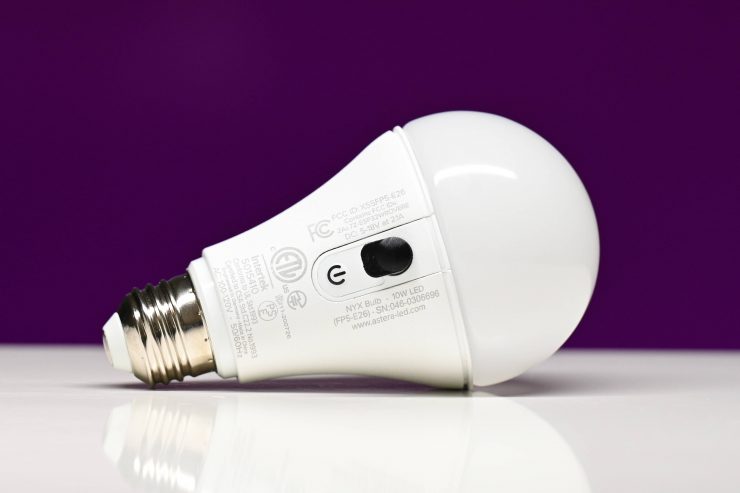
The NYX Bulbs feature an aluminum and polycarbonate construction. They also have an IP44 rating. The bulb is cool-running, fanless, and silent.
Inbuilt Bluetooth Receiver
The inbuilt Bluetooth receiver is a new feature allowing users to control NYX bulbs directly from their smartphones. Previously you required an Astera ART7 Box to be able to control the bulbs via Bluetooth. This new feature makes the bulbs a lot easier to use and control without having to spend additional money.
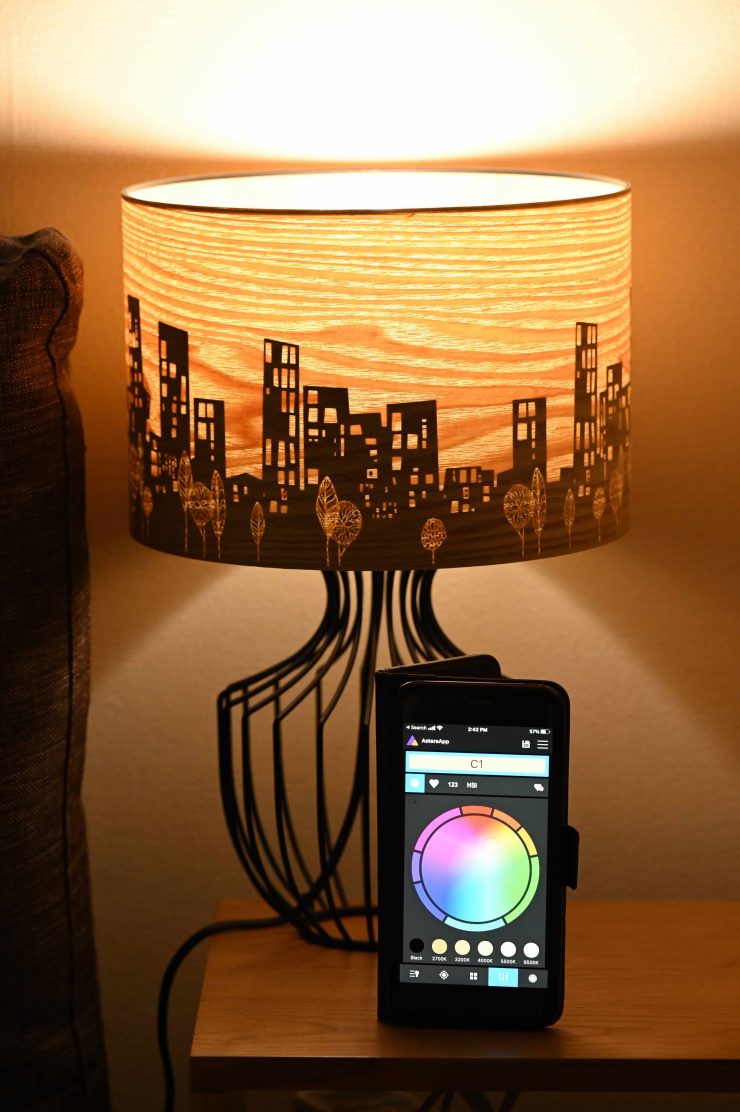
The first Astera NYX Bulb that is connected via the Bluetooth signal enables the control of all the other NYX Bulbs in the range.
The only small catch with this new feature is that the range of control has been reduced. With the Astera ART7 Box you can get up to around 300m of range, but with the in-built Bluetooth receiver in the NYX that gets reduced to around 100m. Now in saying that, 100m of range is still pretty impressive.
I did find that the app was a little confusing and it does take some time to figure out how to use it. It would be nice if Astera had an online video available that took you through how to use the app and how to make changes to the NYX etc.
How do you control the light without using the app?
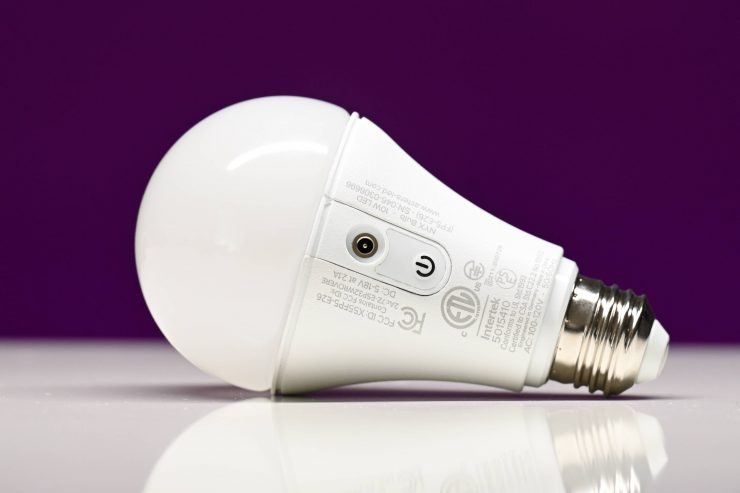
As well as using the app, you can control the light by pressing down on the power button or you can use the optional PowerStation that has a display to make changes.
To turn the fixture on you just hold the power button down for 1 second. You do the same to turn it off.
You can turn the NYX Bulb into ‘Blue mode‘ by holding down the power button for 3 seconds. ‘Blue mode‘ is the pairing mode so you can connect to the Astera App.
You can also press the button shortly once you are in ‘Blue mode’ to cycle between 13 predefined colors and white tones. To stay with that chosen color, you hold the button until the blinking stops.
How do you power it?
The NYX can be powered via a standard lamp socket or with a standard power bank so you get the best of both worlds. This lets you utilize mains power or run it from a USB power bank if mains isn’t available.
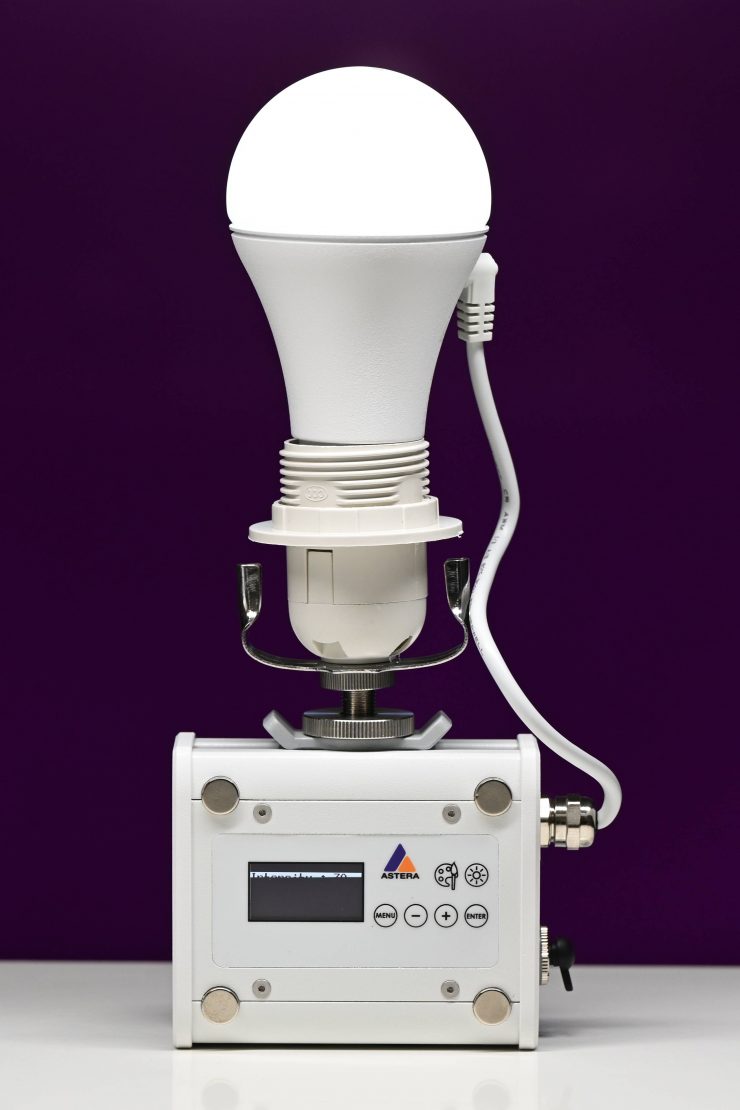
You can also power it through the optional PowerStation. I will tell you more about that in a minute.
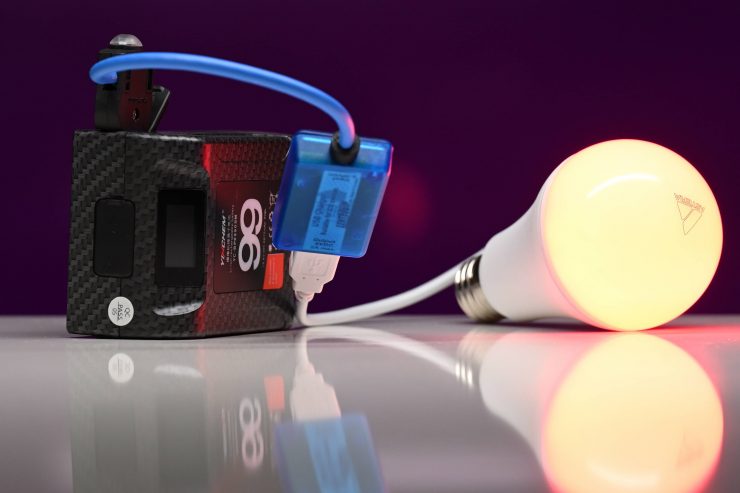
I also have a solution that I could use to power the light from a regular camera battery using a convertor box that goes from D-Tap to USB.
The NYX doesn’t have an internal battery like the Aputure Accent B7c LED RGBWW Light which may put some potential buyers off.
If Astera had chosen to go with an internal battery the base of the bulb would have had to have been wider and then it would also require cooling. It wouldn’t just be a problem dealing with the heat generated by the battery, but you also have to factor in the additional heat that would be generated by the light itself. To get rid of the heat you would need to design the bulb differently and include some type of vents to help dissipate that heat. As soon as you add vents you can longer get an IP44 rating.
Designing a bulb with an internal battery and having to modify how it looks to deal with the heat means that the physical appearance of the bulb means it no longer looks like a regular light bulb. If you are using the bulb as a practical replacement and it is going to be seen in shot then that could potentially be a problem.
On the flip side, a bulb with an internal battery can be placed in light stands that don’t need to be connected to any power.
As you can see you can’t have your cake and eat it too.
Optional PowerStation (Battery Pack & external display)
You can connect the integrated cable to the NYX bulb’s DC connector to power it up. While connected, the Power Station acts as a remote display to program DMX addresses and settings which the bulb will store in its memory. It can also set colors, effects, brightness, etc which the bulb will continue to display when in a powered lamp socket or connected to a power bank.
The PowerStation also has a few other tricks up its sleeve. There are backside magnets so you can attach it directly to metal objects.
The built-in airline track also allows you to attach mounting accessories such as Babypin and Single Stud Ring.
Kelvin Color Temperature Range
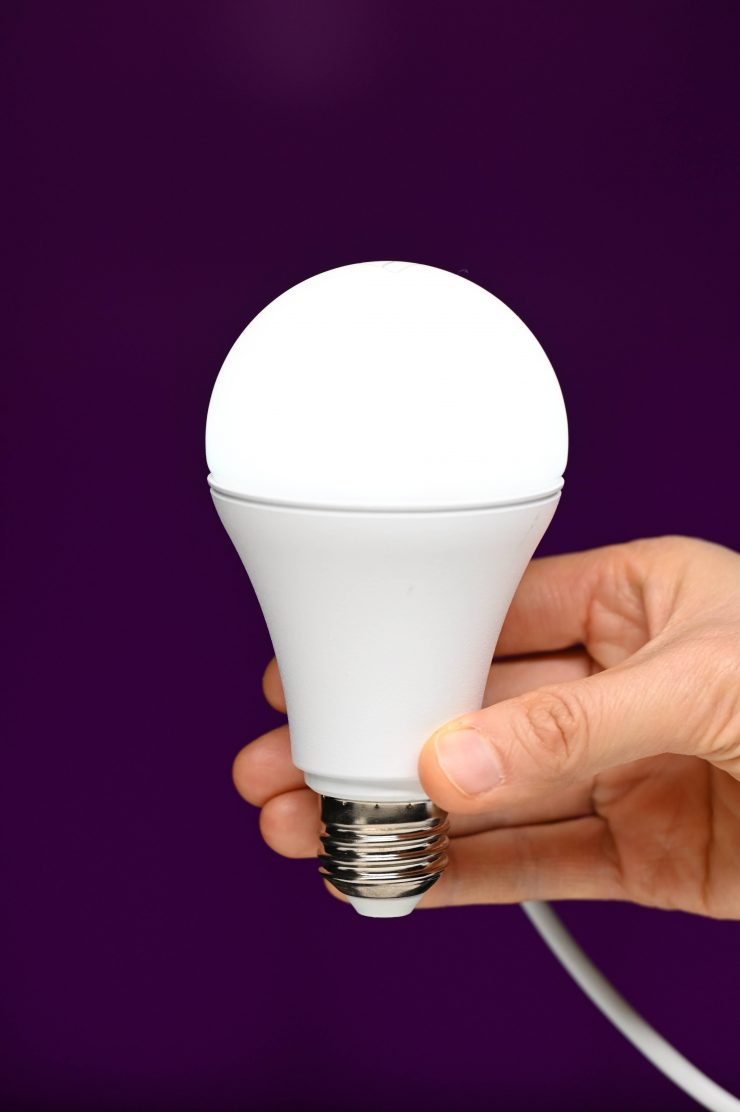
According to Astera, the NYX uses the same Titan LED engine so it is capable of displaying precise colors and white tones with ultra-high CRI and TLCI.
The bulb has a Kelvin color temperature range of 1,750K up to 20,000K. This is a very large range which is very helpful when you want to use the bulb as a practical replacement.
The NYX isn’t your traditional RGBWW, it is RGBMA. This means it is made up of red, green, blue, mint, and amber LEDs. By mixing all of these colors together you can create nice white light.
Being RGBMA also allows Astera to create a lot more fully saturated colors than most traditional RGB lights are capable of.
CCT, RGB & HSI modes
- Talkback+ Detect all available lights, set them up, check their status, configure DMX addresses, and DMX profiles.
- Seamless Runtime Set the length of your production and be sure that your lights won’t run out while still getting the maximum brightness.
- TruColor Calibration Individually calibrated lights lead to 100% color consistency and exact color reproduction of color temperature and filter gels.
- Effects Quickly build programs out of colors and effects, trigger them, or make them match a beat.
- Flicker-Free Scrambled PWM technology to avoid flickering when filming.
- Green/Magenta Correction Adjust green/magenta during content creation to reduce postproduction work.
- Scheduled Standby Switch lights into power-saving standby and schedule them to wake up when the production starts.
- Dynamic PowerBoost This exclusive feature makes the light able to display the maximum brightness at all times and intensify non-white colors.
- Emergency Lights Switches to white light when AC power is cut to keep your event save
- DJ Feature Auto BPM analyzes the beat and matches programs to it, flash buttons can trigger special effects while being held down.
- Firmware Updatable The AsteraApp is packed with many additional items and new features will be frequently added via software updates.
Cup Bounce
A nice little optional accessory that is available is the Cup Bounce. What this essentially does is two things. First, it limits any spill coming from on top of the bulb, and second, it reflects light back down.
Now, why would you want to reflect light back down. Well, the problem with all of these news RGB bulb lights is that there aren’t any light emitters down the bottom and this can be a problem when using the bulb in a practical lamp because you don’t get much light towards the bottom. This makes the bulb look natural.
By adding the cup bounce you can bounce light back down so that it takes on the appearance of using a regular light bulb. It is a simple solution, but one that works well.
Photometrics
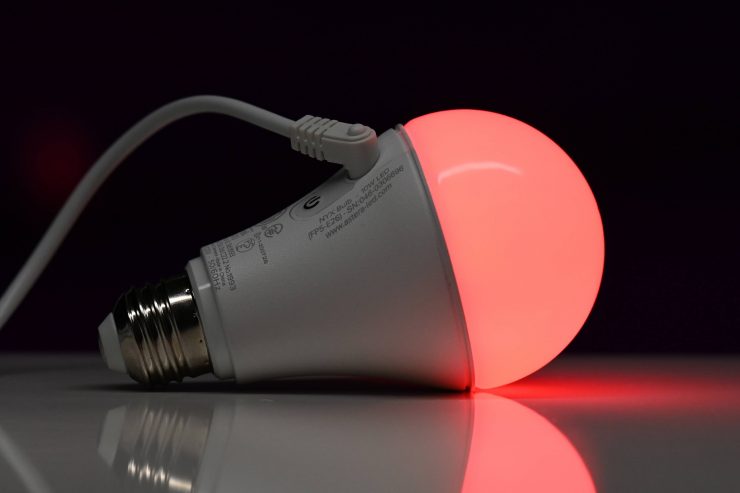
So now let’s get to the photometric results. I always test lights in this way so that I get a reference to how they compare to other fixtures. Results only tell part of the story and should never be used alone to judge a light. I have found from extensive testing over the years that certain lights that have good photometric results don’t always look good, and lights that have worse photometric scores can sometimes look better than their results indicate.
Different lights can also look different depending on what camera you happen to be using.
Output & Color Temperature Accuracy
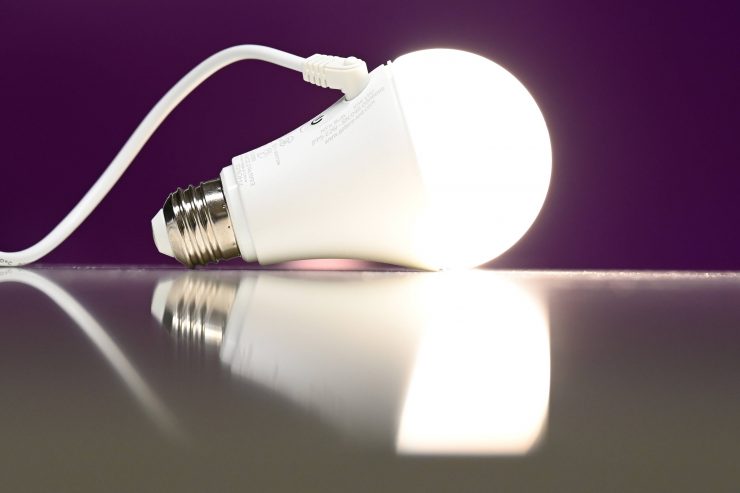
I tested the Astera NYX at a variety of Kelvin color temperatures with a Sekonic C-800 Spectrometer to find out how much output the light had and how accurate the Kelvin color temperature reproduction was.
Now, this is not a light that is going to have a massive amount of output as it is just a bulb that draws 10W.
All readings are taken at a distance of 1m (3.28ft) in a controlled environment.
5600K
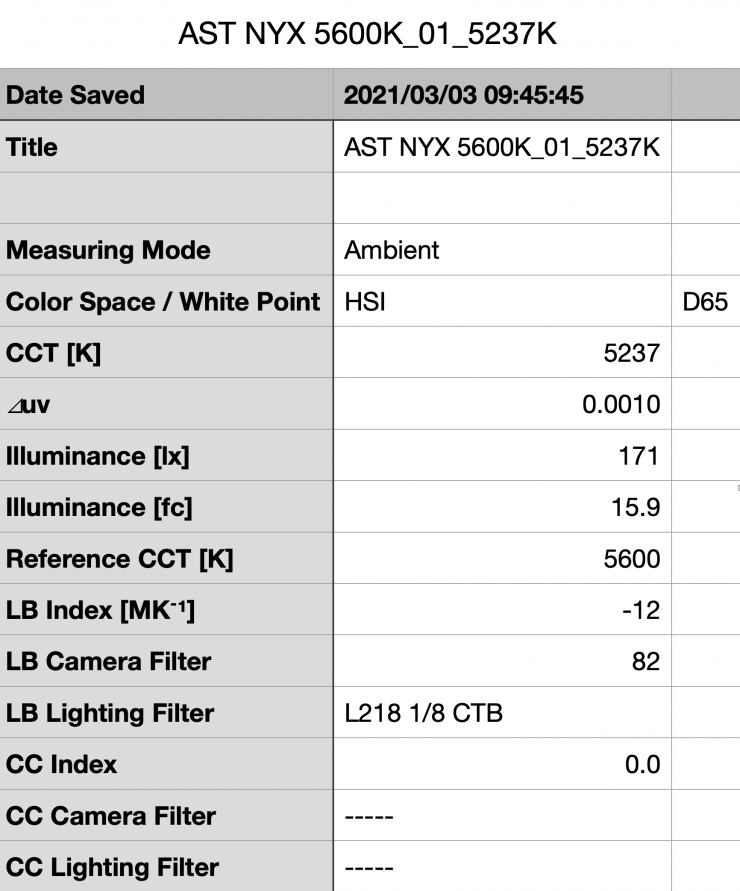
Above you can see that the NYX recorded an output of 171 lx (15.9 fc) at a distance of 1m when set at 5600K.
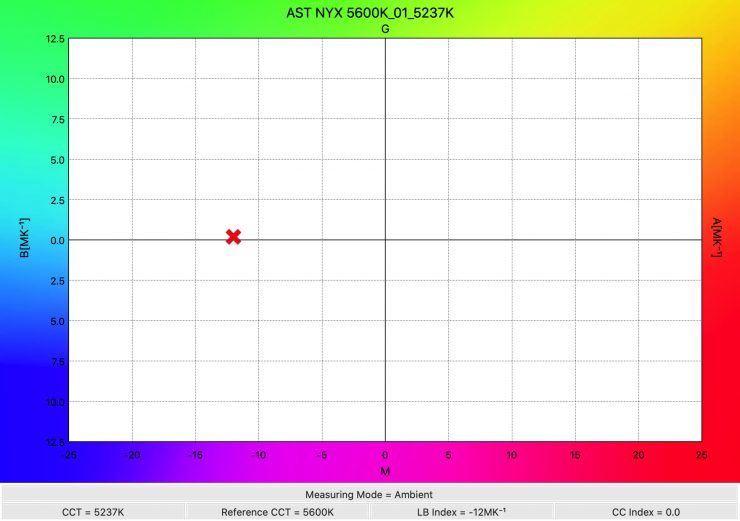
The light recorded a Kelvin color temperature reading of 5237K which was more than 300K off being correct.
So, how does the output at 5600K compare to the Aputure Accent B7c LED RGBWW bulb that Erik reviewed? Well, let’s see.
| Output at 5600K | |
| Astera NYX | 171 lx |
| Aputure Accent B7c LED RGBWW bulb | 87.1 lx |
The Astera NYX has almost twice as much output as the Aputure Accent B7c LED RGBWW bulb.
3200K
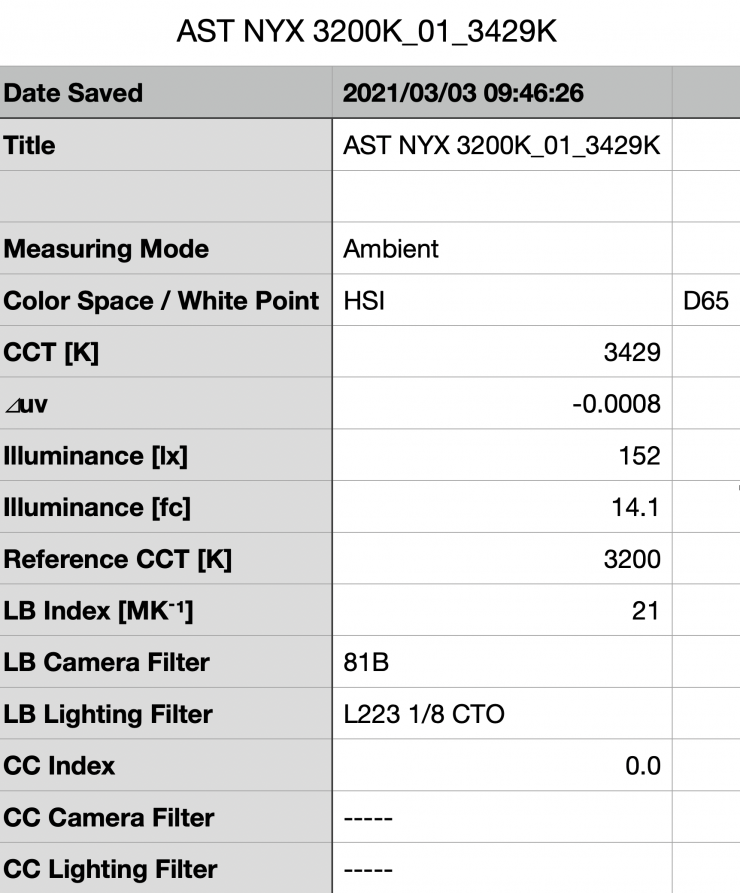
Above you can see that the NYX recorded an output of 152 lx (14.1 fc) when set at 3200K. This was slightly less output than it gave me at 5600K.
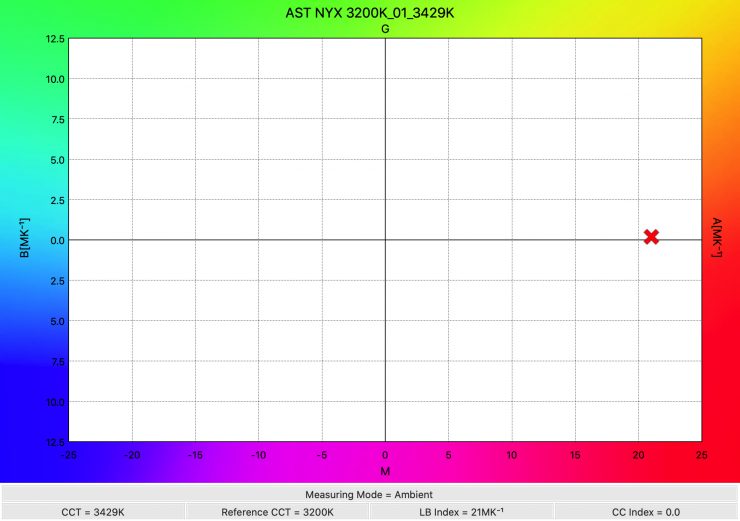
The light recorded a Kelvin color temperature reading of 3429K which was more than 200K off being correct.
So, how does the output at 3200K compare to the Aputure Accent B7c LED RGBWW bulb that Erik reviewed? Well, let’s see.
| Output at 3200K | |
| Astera NYX | 152 lx |
| Aputure Accent B7c LED RGBWW bulb | 71 lx |
Just like at 5600K, the Asyera NYX at 3200K had a lot more output than the Aputure Accent B7c LED RGBWW bulb.
How does it perform at various Kelvin color temperatures?
Summary of results
| OUTPUT | KELVIN COLOR TEMPERATURE READING | |
| 2500K | 147 lx | 2940K |
| 3200K | 152 lx | 3429K |
| 4500K | 171 lx | 4452K |
| 5600K | 171 lx | 5237K |
| 6500K | 159 lx | 5862K |
| 8000K | 164 lx | 6805K |
| 10000K | 141 lx | 7692K |
These results show me that the light’s output is reasonably consistent at almost all Kelvin color temperatures. The light’s output varies by 21.3% across the whole Kelvin spectrum. At 4500K to 8000K the light’s output only varies by 13 lx.
The light’s Kelvin color temperature consistency is not great and this is something you need to be mindful of when working with the fixture. It consistently gave me warmer Kelvin color temperatures than what was being selected on the NYX. I found the NYX to the most Kelvin color-accurate when it was used at 4500K
So how does this compare to the Aputure Accent B7c LED RGBWW bulb? Below you can see figures that Erik recorded when he conducted his review.
| OUTPUT | KELVIN COLOR TEMPERATURE READING | |
| 2000K | 56.4 lx | 1867K |
| 3000K | 71 lx | 3200K |
| 4000K | 72.9 lx | 4276K |
| 5000K | 83.7 lx | 5336K |
| 6000K | 87.1 lx | 6377K |
| 7000K | 84 lx | 7464K |
| 8000K | 82 lx | 8922K |
| 9000K | 78.1 | 10468K |
| 10000K | 84.3 | 10534K |
These results show me that the Aputure’s output is reasonably consistent at almost all Kelvin color temperatures. In saying that, the light’s output varies by 55.4% across the whole Kelvin spectrum. At 5000K to 10000K the light’s output only varies by 9 lx. If you use the light below 3000K the output starts to drop off quite significantly.
It is interesting to see that the Aputure’s Kelvin color temperature recordings were all cooler than what was being selected on the bulb. This is opposite to the Astera NYX.
Does the light lose Kelvin Color Accuracy once you start dimming it down?
Some LED lights do not maintain accurate Kelvin color temperature accuracy once you start dimming them down. So how does the Astera NYX perform at 5600K?
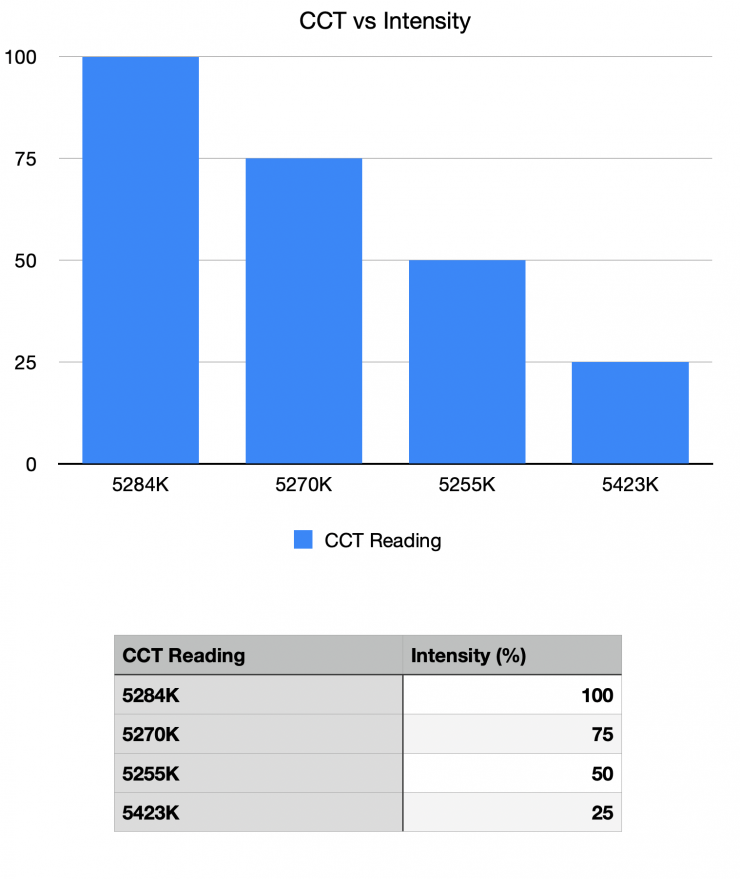
Above you can see that the light Kelvin color temperature only varies by 29K between 100% and 50% output which is extremely impressive. This tells me that the light maintains Kelvin color accuracy once you start dimming it down. Once you get down to around 25% the Kelvin color temperature changed by 139K which is still minimal.
CC Index & ⊿uv
The CC Index displays the CC correction value and whether any magenta or green need to be added or subtracted. 1 CC corresponds to 035 Kodak CC values or 1/8 Rosco filter values. Any reading less than +1.00 or -1.00 and you’re probably not going to need to make any kind of adjustment. The ⊿uv is the value to show how much this light is away from being an ideal light source (black body radiation = incandescent lamp). As with the CC Index you want this number to theoretically be zero. Kelvin is not a linear value, so we need to convert from Kelvin to MK-1 to compare the values of color temperature. To calculate from Kelvin to Mired is MK-1= 1*1000000/Kelvin. While this may sound confusing, it is the only way of measuring if the Kelvin shift is significant enough to warrant having to use a filter for correction. Below are the results for the Astera NYX:
Kelvin Vs MK-1
| Kelvin | Difference in K | MK-1 | Difference in MK-1 | |
| SET VALUE | 2500K | 0 | 400 | 0 |
| ACTUAL READING | 2940K | 440 | 340.13 | -59.87 MK-1 |
| SET VALUE | 3200K | 0 | 312.50 | 0 |
| ACTUAL READING | 3429K | 229 | 291.63 | -20.87 MK-1 |
| SET VALUE | 4500K | 0 | 222.22 | 0 |
| ACTUAL READING | 4452K | 48 | 224.61 | 2.39 MK-1 |
| SET VALUE | 5600K | 0 | 178.57 | 0 |
| ACTUAL READING | 5237K | 363 | 190.94 | 12.37 MK-1 |
| SET VALUE | 6500K | 0 | 153.85 | 0 |
| ACTUAL READING | 5862K | 638 | 170.59 | 16.74 MK-1 |
| SET VALUE | 8000K | 0 | 125 | 0 |
| ACTUAL READING | 6805K | 1195 | 146.95 | 21.95 MK-1 |
| SET VALUE | 10000K | 0 | 100 | 0 |
| ACTUAL READING | 7692K | 756 | 130 | 30 MK-1 |
These figures might look confusing, but what it tells me is that the light is not very Kelvin color accurate and you would need to use color correction gels or alter settings on the light when using it at any temperature other than 4500K. Any MK-1 score that is above or below +/- 10 MK-1 would require the use of color correction gels. These MK-1 difference scores were pretty bad. In saying that, these are technical results that don’t mean that the light won’t actually look good.
CC INDEX & ⊿uv
| CC INDEX | ⊿uv | |
| 2800K | 0.4G | 0.0009 |
| 3200K | 0 | 0.0008 |
| 4500K | 0.1M | 0.0008 |
| 5600K | 0 | 0.0010 |
| 6500K | 0 | 0.0010 |
| 8000K | 0.2G | 0.0014 |
| 10000K | 0.4G | 0.0009 |
As you can see the ⊿uv scores are outstanding for this light. Despite not being overly Kelvin color temperature accurate, the light is very neutral and doesn’t lean towards green or magenta.
Color Rendering
5600K
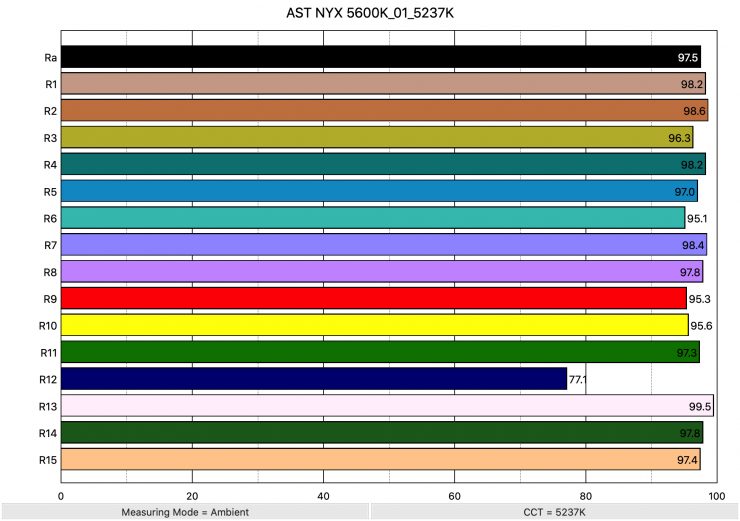
So now that we have seen how much output the Astera NYX produces, how does it perform when it comes to replicating accurate colors. Above you can see that when the light was set at 5600K it recorded an average CRI (R1-R8) of 97.5 and an extended CRI (R1-R15) of 95.97. For replicating accurate skin tones it recorded for R9 95.3 (red), 99.5 for R13 (closest to caucasian skin tones), and 97.4 for R15 (closest to Asian skin tones). These results were excellent.
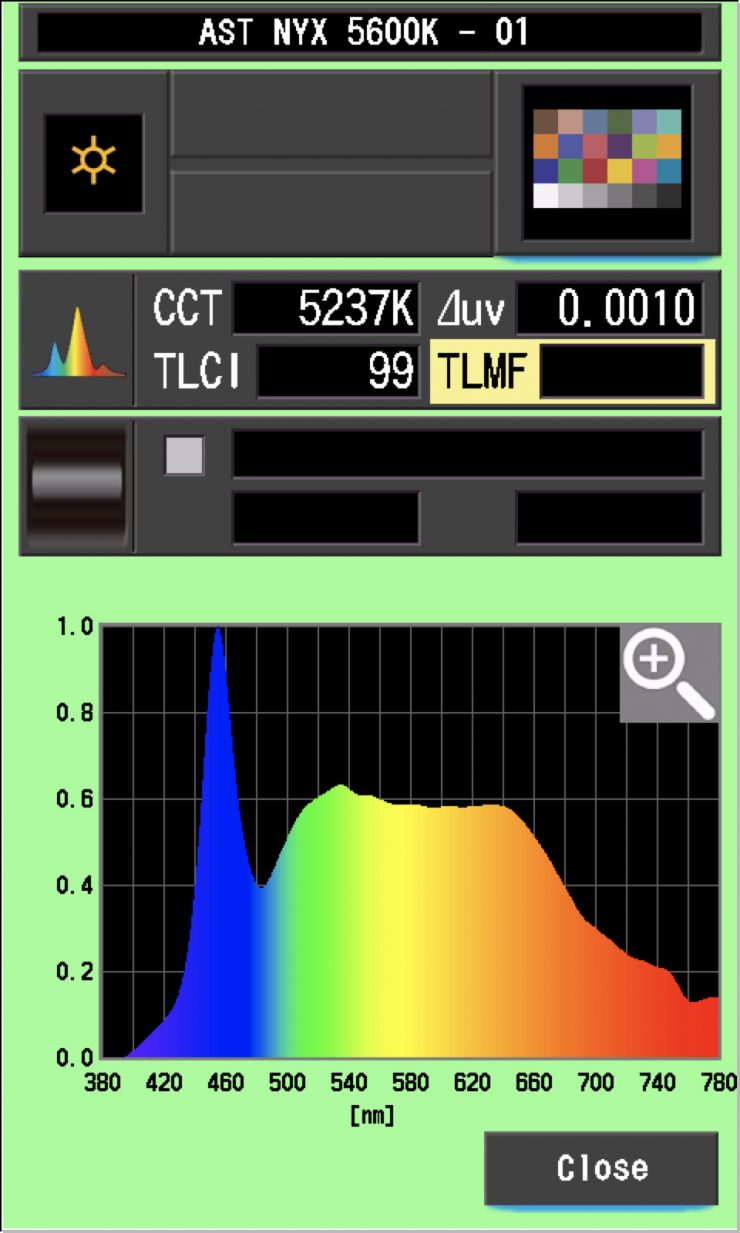
The light, when set at 5600K, recorded a TLCI score of 99.
How does this compare to the Aputure Accent B7c LED RGBWW bulb that Erik previously reviewed when used at 5600K? Below you can see:
| Average CRI | Extended CRI | |
| Astera NYX | 97.5 | 95.97 |
| Aputure Accent B7c LED RGBWW bulb | 98.1 | 96.54 |
As you can see the Aputure has slightly better results, but when you reach scores that are this high the real-world difference would be virtually impossible to see.
3200K
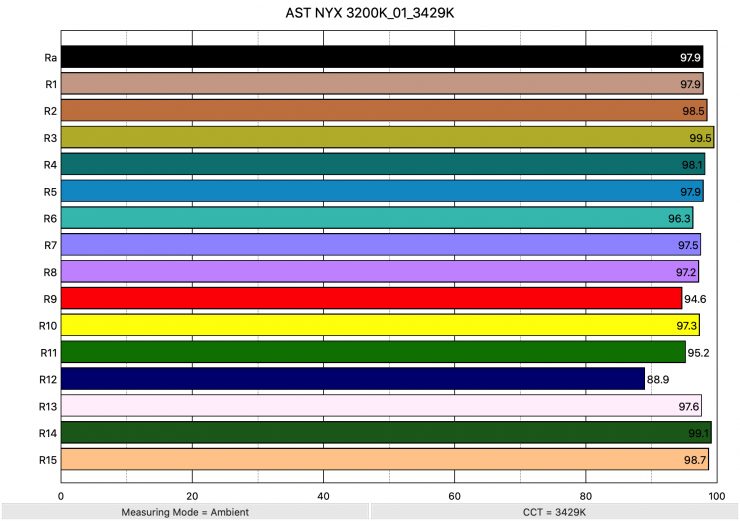
Above you can see the scores for when the light was used at 3200K. It recorded an average CRI (R1-R8) of 97.9 and an extended CRI (R1-R15) of 96.95. For replicating accurate skin tones it recorded 94.6 for R9 (red), 97.6 for R13 (closest to caucasian skin tones), and 98.7 for R15 (closest to Asian skin tones).
These results were again excellent and even better than when the light was set at 5600K.
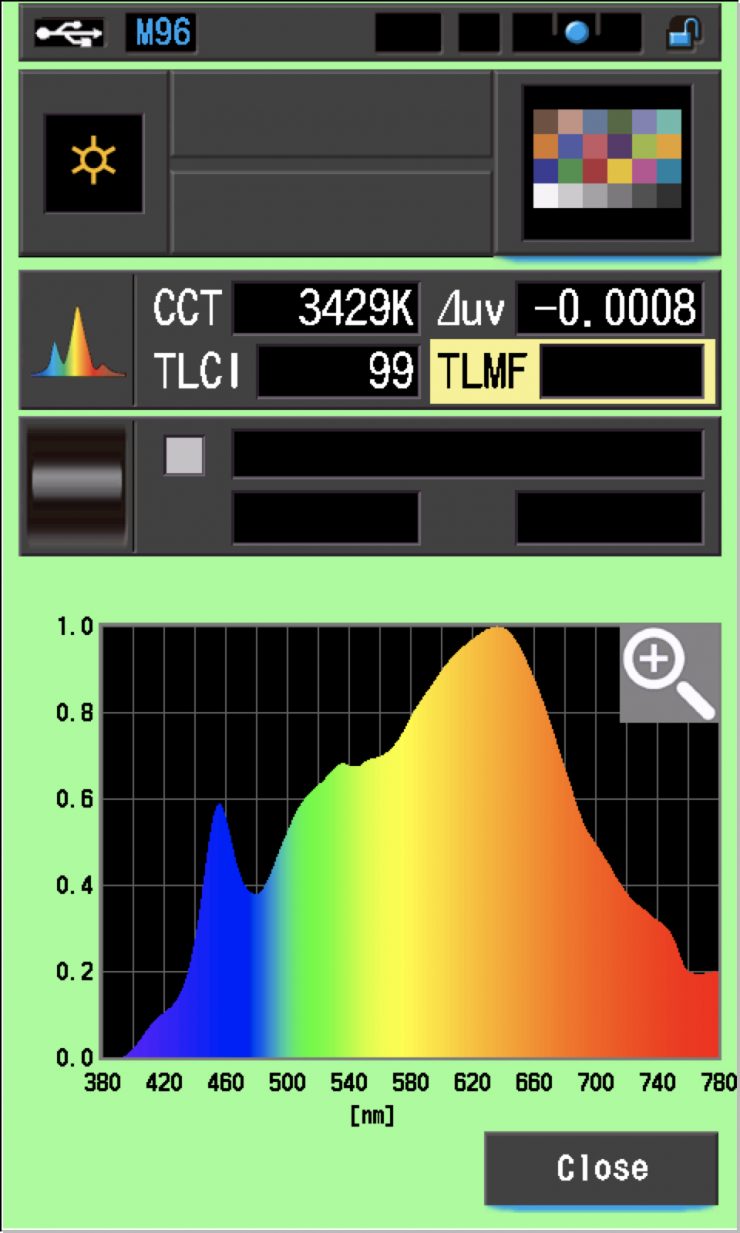
The light, when set at 3200K, recorded a TLCI score of 99.
How does this compare to the Aputure Accent B7c LED RGBWW bulb that Erik previously reviewed when used at 3200K? Below you can see:
| Average CRI | Extended CRI | |
| Astera NYX | 97.9 | 96.95 |
| Aputure Accent B7c LED RGBWW bulb | 94.8 | 93.67 |
As you can see the Astera has slightly better results, but when you reach scores that are this high the real-world difference would be virtually impossible to see.
TM-30
TM-30 is a relatively new color rendering standard that was developed to deal with the limitations of CRI. TM-30 looks at 99 individual colors. These 99 colors are categorized into seven groups: nature, skin color, textiles, paints, plastics, printed material, and color systems.
TM-30 scores go from 0 – 100. The higher the score, the more accurate a light is at producing colors. Any score in the ’90s is considered to be good.
TM-30 scores go from 0 – 100. The higher the score, the more accurate a light is at producing colors. Any TM-30 Rf score in the ’90s is considered to be good. What is interesting and something that you need to be very aware of is that two separate light sources with the exact same CRI scores can render colors very differently. A light with a high CRI rating could have a low TM-30 score. Conversely, a light with a good TM-30 score could have a bad CRI score.
Now, there are two measurements associated with TM-30, Rf and Rg.
- Rf (Color Fidelity)
- Rg (Color Gamut)
With Rg value, a score below 100 indicates that the light source renders colors with less saturation than the reference source. So ideally you want this score to be above 100.
Above you can see the scores for the Astera NYX when it is used at both 3200K and 5600K. The NYX had an Rf score of 96 when used at 3200K and an Rg score of 100. At 5600K it had an Rf score of 93 and an Rg score of 100
SSI
SSI (Spectral Similarity Index) was developed by the Sci-Tech Council of the Academy. SSI gives me the ability to set any light as a standard, or use predefined standards (such as CIE D55), and then give other lights an SSI score based upon how well they will match standards such as CIE D55. This way I can measure spectral response and compare it directly against an ideal light source. This is actually a much better test than recording CRI scores.
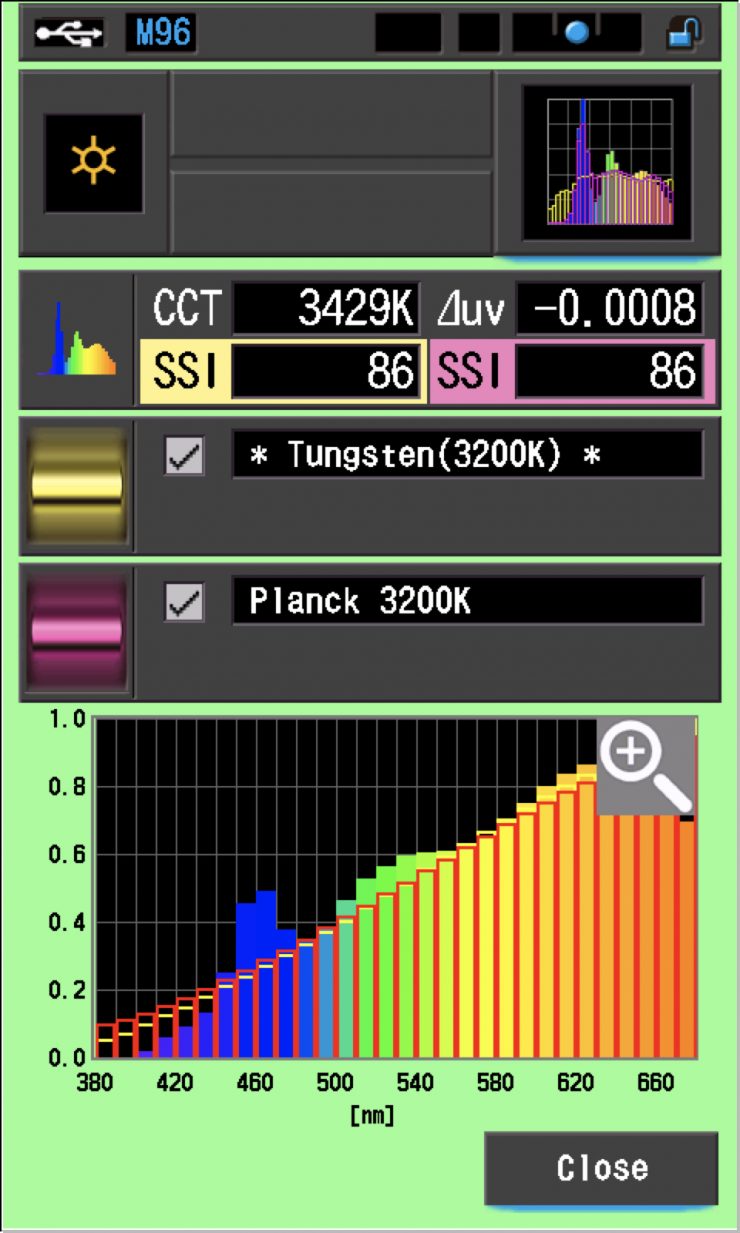
In this graph, the red bars indicate a perfect Planck 3200K source. The gold bars indicate a perfect 3200K Tungsten source. This lets us compare how close to a perfect 3200K lighting source the Astera NYX is. Any SSI score in the low ’80s is very good for a 3200K LED light. The NYX scored in the mid-’80s which were excellent scores. As you can see, LED lights have a hard time replicating colors below about 450nm.
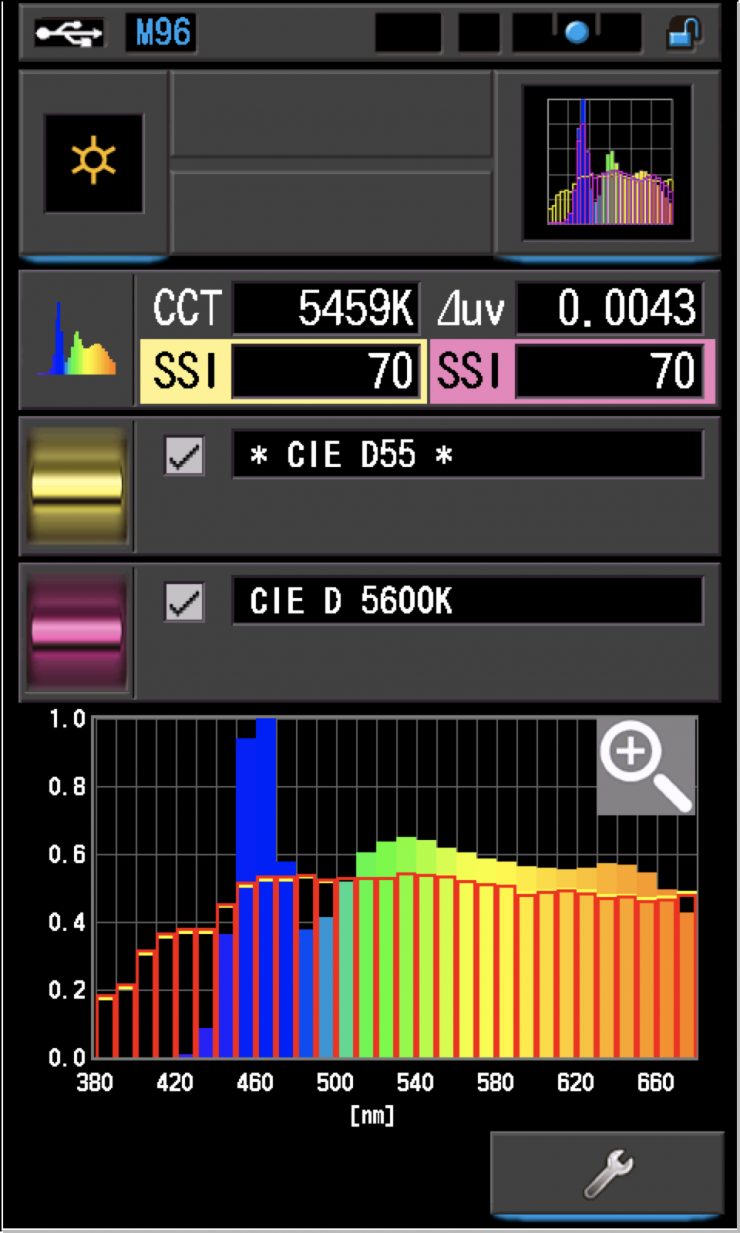
In the graph above the gold bars indicate a perfect CIE D55 source. The red bars indicate a perfect CIE D 5600K source. A score in the low 70’s is ok for a 5600K LED source.
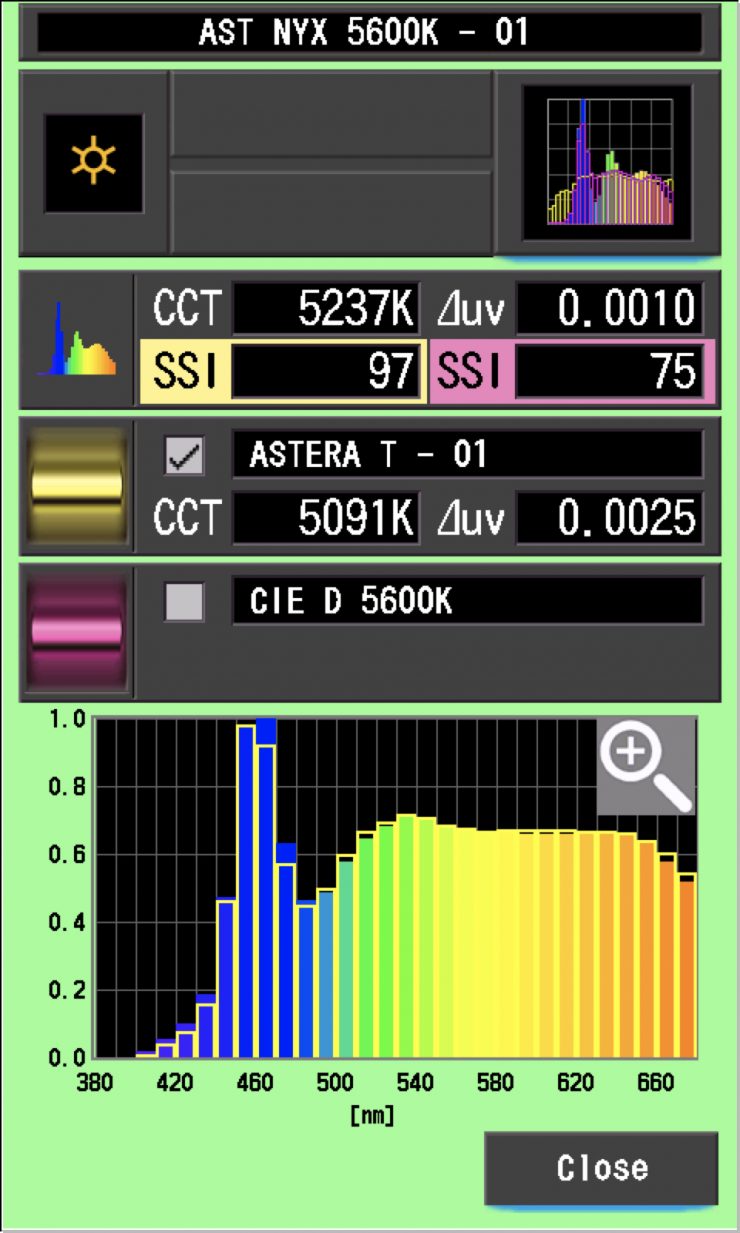
The main reason we want to record SSI scores is so we can see how well they match with other lights. As an example, let’s see how well it matches with the Astera Titan. In theory, they should be an almost exact match as they both utilize the same light engine. Above you can see the results at 5600K. As you can see, the lights were very close to being a perfect match.
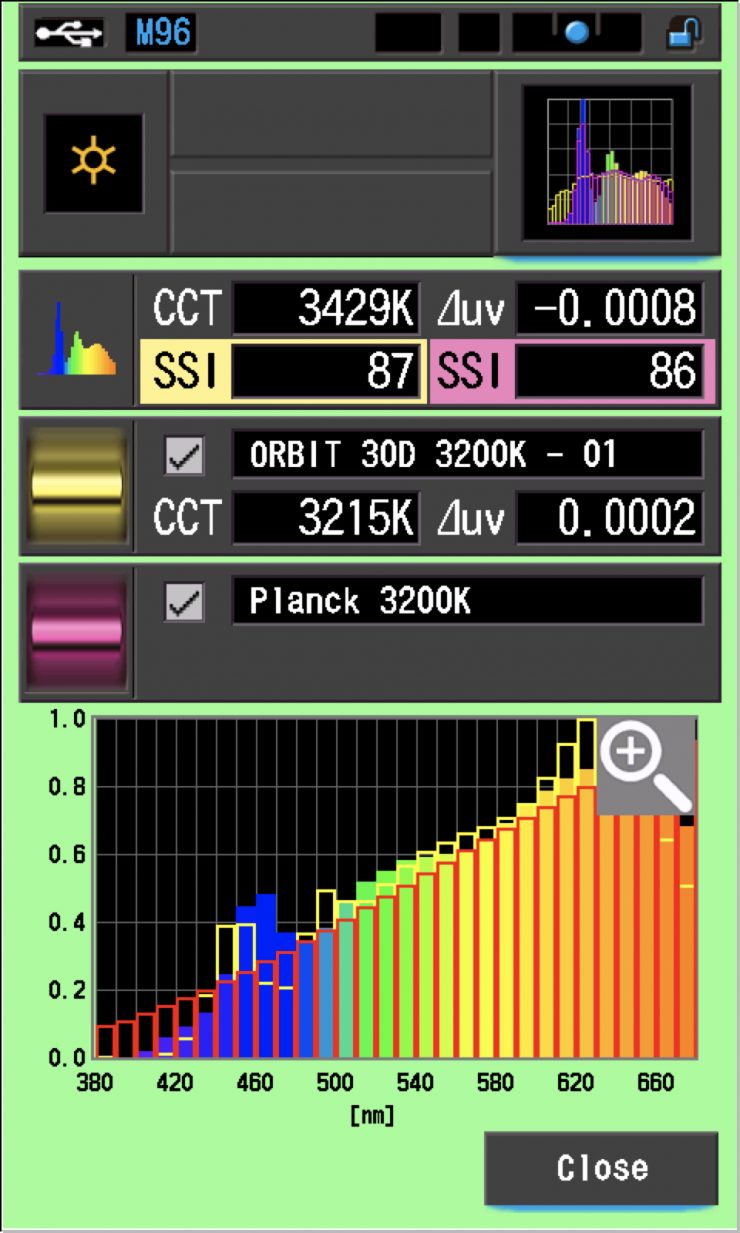
As another comparison let’s see how well the Astera NYX matches the ARRI Orbiter when used at 3200K. AS you can see, the lights aren’t an exact match, but a score in the high 80’s does indicate you could use them together without too many problems.
SSI tests are a great way of telling you what lights you own or use will work well together.
Spectral Distribution
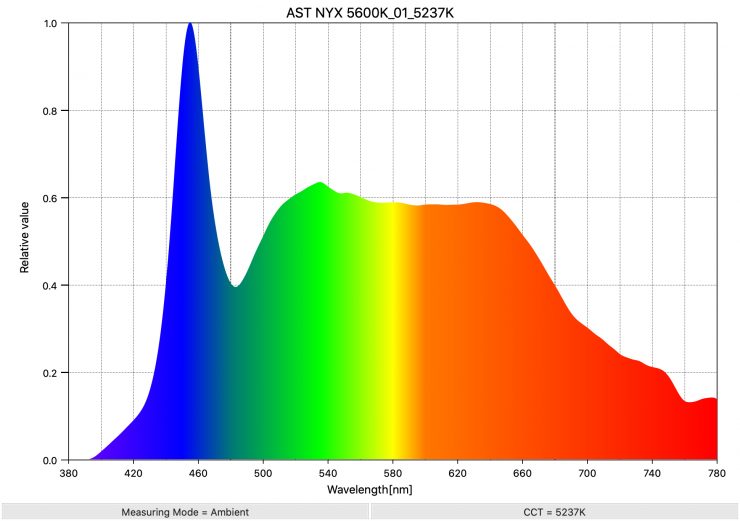
Above you can see the spectral distribution of the Astera NYX when it is set at 5600K. The spectral distribution is very full and even.
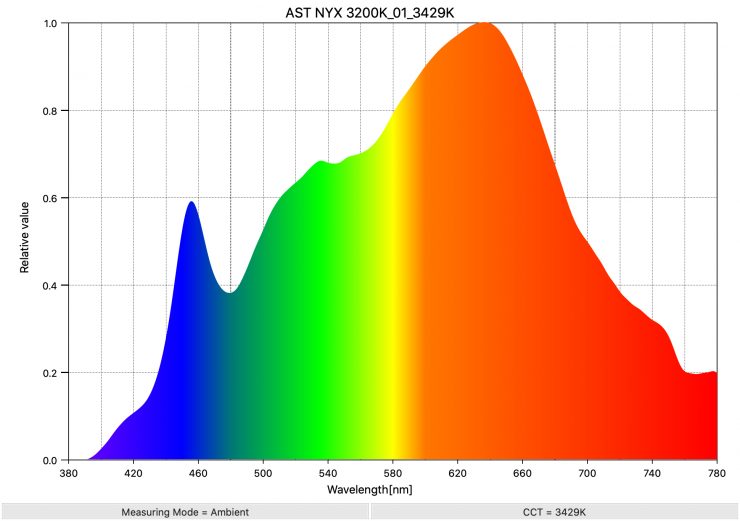
Above you can see the spectral distribution of the Astera NYX when it is set at 3200K. The spectral distribution is quite full but there is a tiny bump in green.
Real-World Performance & Quality of Light
The Astera NYX creates a beautiful soft lighting source and I found it to be an ideal practical replacement. Being able to adjust the output and Kelvin color temperature as well as create a multitude of colors makes this a very versatile solution.
Above you can see some examples of creating different looks by placing the Astera NYX in a standard fitting in a lamp.
Above you can see the light cycling through various colors.
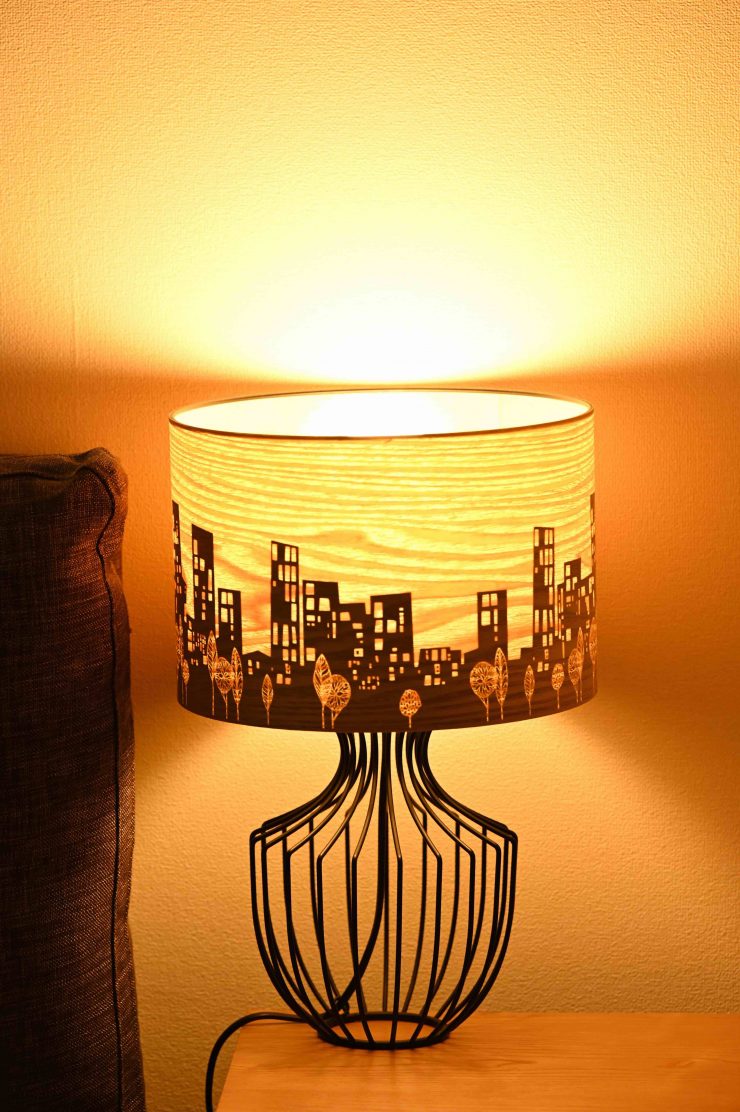
Above you can see what the standard LED bulb that I had in the lamp looks like. While there is nothing wrong with it, I can’t adjust the intensity of that bulb or change its Kelvin color temperature. Often with practical bulbs, they can be too bright when using them in backgrounds.
I also found that by placing an Astera NYX in a standard lighting socket in the ceiling I could create light that looked similar to what was coming through a window. This is a very easy way of creating a bit of extra practical motivated lighting in a room.
Price & Availability
The Astera NYX is not cheap. A single bulb will set you back $105 USD. No matter which way you look at it, this is pretty expensive for a 10W bulb, even with the feature set it has. In saying that, it isn’t that much more than the price of the competition.
- Astera PowerStation with Built-In Battery $180 USD.
- Astera E27 Socket for FP5 LED Bulbs with Single-Stud Fitting $20 USD
- Astera Trackpin-Babypin with Single-Stud Fitting $30 USD
- AsteraBox CRMX Transmitter Box $400 USD
- Astera Wireless LED IR Remote Control ARC1 $15 USD
- Astera PowerStation Hanger (8-Pack) $50 USD
- Astera CupBouncers for NYX Bulbs (8-Pack) $55 USD
The CupBouncers are overpriced in my opinion and you can’t just buy a single one. I think you could easily go to an art/craft shop and DIY up yourself a similar solution for a couple of dollars.
Competition
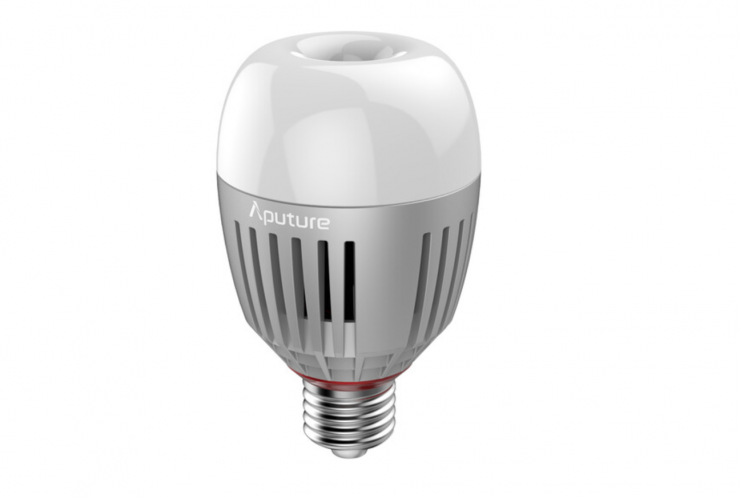
The competition mainly comes in the form of the Aputure Accent B7c LED RGBWW Light ($70 USD). Erik did a full review which you can see here.
The Accent B7c is a 7W RGBWW LED smart bulb that also fits into a standard E26/E27 light bulb socket.
So how does the Aputure compare to the Astera NYX? Well, let’s compare what features they have:
| Astera NYX | Aputure B7c | |
| Base Type | E26/E27 | E26/E27 |
| Lumens | 750 | 570 |
| Wattage | 10W | 7W |
| CCT Range | 1750 to 20,000K | 2000 to 10,000K |
| Beam Angle | 120° | Not listed |
| Effects | Yes | Yes |
| Filters | Yes | No |
| RGB Mode | Yes | Yes |
| HSI Mode | Yes | Yes |
| Green/Magenta Correction | Yes | No |
| Color Picker | No | Yes |
| On-Board Button Control | Yes | Yes |
| AC Input | 90 to 264 VAC, 50 / 60 Hz | 100 to 200 VAC, 50 / 60 Hz at 0.12 A |
| DC Input | 5 to 18 VDC at 2 A | None |
| Built-in Battery | No | Yes |
| Bluetooth | Yes | Yes |
| App Control | Yes | Yes |
| Wireless DMX | Yes | No |
| Built-in CRMX | Yes | No |
| Weight | 8.5 oz / 240 g | 8.5 oz / 240 g |
| Dimming | Yes | Yes |
What do you get?
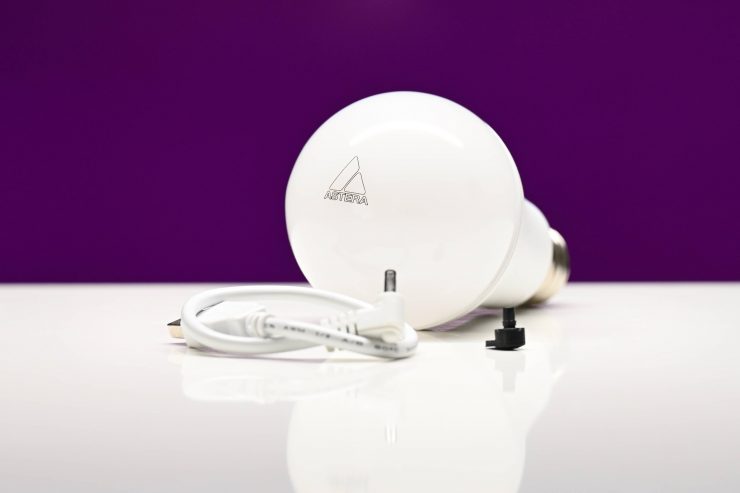
You don’t get much when you buy a single NYX Bulb. Below is what is included:
- Astera NYX 10W LED Bulb Engine with RGBA + Mint
- USB Cable
- Limited 2-Year Warranty
Full Specifications
| Base Type | E26/E27 |
| Beam Angle | 120° |
| Color Temperature | 3200K to 6500K |
| Lumens | 750 |
| Color Accuracy Standard | TLCI 96 |
| Wattage | 10 W |
| Dimming | Yes |
| AC Input Power | 90 to 264 VAC, 50 / 60 Hz |
| DC Input Power | 5 to 18 VDC at 2 A |
| Maximum Overall Diameter (MOD) | 2.8″ / 70 mm |
| Maximum Overall Length (MOL) | 5.1″ / 130 mm |
| Weight | 0.53 lb / 0.24 kg |
Conclusion
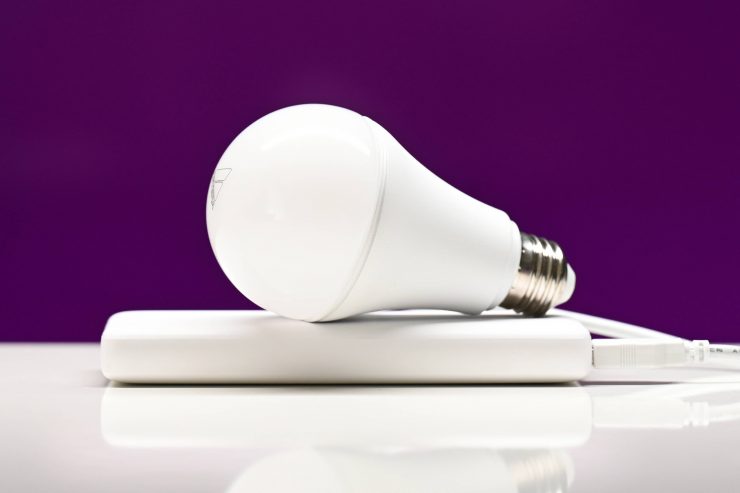
RGBWW bulbs are quite a niche product and depending on what type of work you do they may or may not be of interest to you.
If you shoot a lot of interviews and/or often utilize practicals in the background then something like the Astera NYX makes a lot of sense to carry around in your kit. Often practical lightbulbs can be too bright or the Kelvin color temperature doesn’t quite work for the ‘look’ you are trying to create. It is nice to be able to insert a bulb and then be able to control its output and Kelvin color temperature.
The Astera NYX is well made, it produces a really nice quality of light, it is very color accurate, and it pretty easy to use and control.
Like what we do and want to support Newsshooter? Consider becoming a Patreon supporter and help us to continue being the best source of news and reviews for professional tools for the independent filmmaker.

